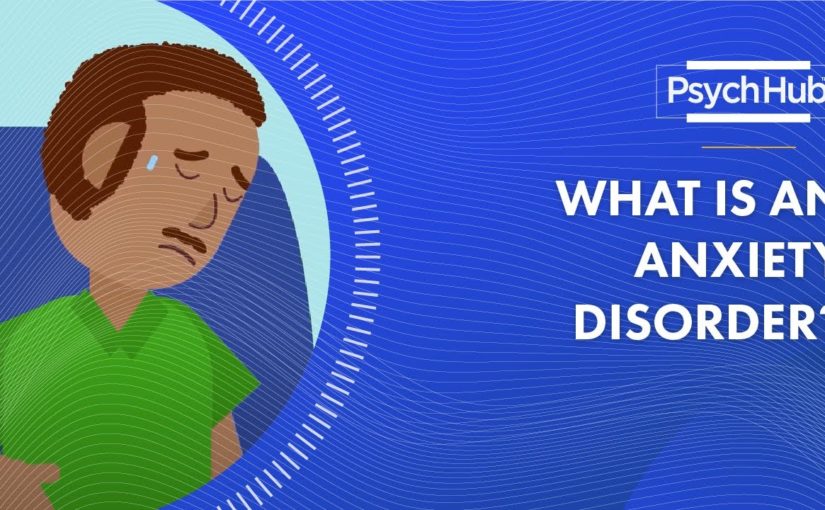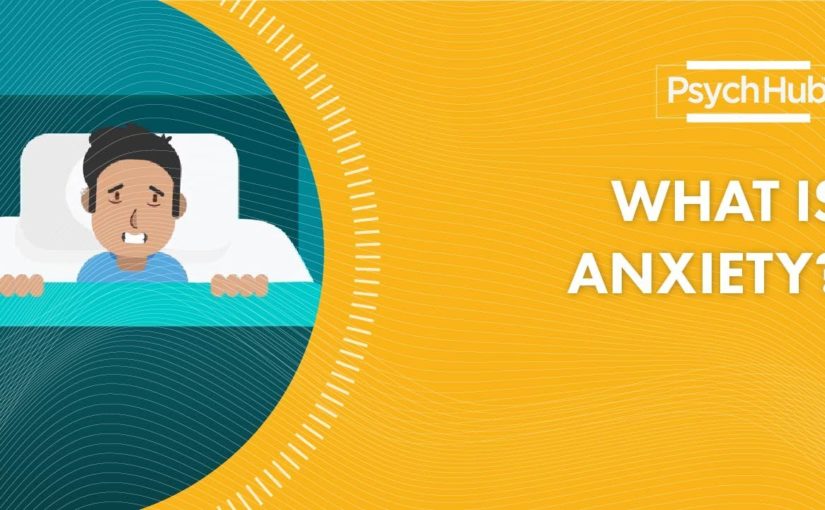 They’re just designed to make you feel different. But
feeling different isn’t safer at all, because you’re never in
actual danger from feeling anxious. Right? So you’re gonna
have to confront the reality behind that question. But how am
Did I suppose to surrender or accept? Well, look what those
questions mean. So next question is, what exposures can
I do get ready for dot dot dot, pick an event, a wedding, a
concert, a family vacation, something. And so in the end,
this is a simpler answer. You have to remember what exposures
are therefore, people think, or they get confused. And they
think, Well, I’m learning to drive on the highway. Again, I’m
learning to go shopping, I’m learning to stay home alone.
Again, you’re not learning to do anything. The
only thing that you’re learning to do, which is portable across
situations and challenges, and context is learning how to
get better at experiencing anxiety and fear. So we only do
exposures, do specific things like drive go for a walk or
stay home alone or eat food that you’re afraid of. So that
it will trigger that anxiety, we were intentionally triggering
anxiety, fear, uncomfort, discomfort, uncertainty, all of
those things were intentionally triggering them so that you can
practice feeling them and moving through them in a new way, a
the more productive way that ultimately teaches you that you
don’t have to save yourself from them. So if the exposure is not
to the event, the task, or the place where the food or
whatever the exposure is to the feelings, then every exposure is
an exposure that works for other things. Right? So if you’re
getting ready to go to, for instance, you’re going to a
concert all you got tickets to a concert, how can I expose myself
to that? I mean, yes, can you do things that sort of mimic a
concert? Yeah, that doesn’t hurt in any way. But remember, you’re
only you’re not afraid of the concert, you’re afraid of how
you will feel at the concert. So if you want to take a cruise
around the world get better at staying home alone for two
hours. That’s what I tell people all the time. If you want to go
back to work, then get better at walking around your block.
Because you’re really in the end, you’re learning a new way
to relate to anxiety across all contexts. And if you can
adopt this, then you don’t have to worry about specific
exposures for every single thing you might have to do in your
life, life gets a lot simpler that way. And your recovery
starts to become a little wider and more durable. So it’s really
important, like think about that. I’m only doing these
things because they trigger my anxiety, the anxiety, fear,
that’s the exposure, not the task or the place. So let’s move on to the question.
You know, in 10. I know which one I want to take, we’re on
seven right now. This question is what does this method work if
I have trauma too. So first of all, I always have to say this
is not a method like I’m not teaching them. This isn’t the
drew method. It’s not my method. I didn’t invent any
of this. These are just the principles of a cognitive
behavioral approach to anxiety disorders. So there are
parallels between anxiety disorder, recovery, and trauma
resolution, that’s 100% True, a lot of things will look the
same. If you’re working with a trauma resolution specialist,
some of the things that you would hear would sound a lot
like the things that I talked about, but they’re not
the same. And the issue here is, let’s assume that you do have a
traumatic background and you’ve experienced some traumatic
events in your life. And maybe that that trauma did spawn your
anxiety disorder that can happen. But then what I always
say is that one problem, the trauma has now become two
problems. You have trauma and an anxiety disorder. Right? So you
have to realize that it doesn’t mean that the anxiety disorder
doesn’t count because it’s only the trauma if you had one
problem now you have to That’s okay though, don’t freak out.
You can successfully deal with both of those issues. A lot of
people do, right? A lot of people do that work on both
fronts. But traumatic experiences do not mean that the
anxiety disorder doesn’t count, so some people are under
the assumption that like, well, this all sounds good, but
I have trauma. So what you’re saying doesn’t apply to me.
Okay, you may have trauma, and I’m very sorry for the things
that you’ve lived through. That’s possible. But in the end,
if you will have learned to be afraid of your heartbeat, or
your breath or you have learned to be afraid of, you
know, depersonalization or jelly legs, and you refuse to go out
of the house, or you are convinced that you have some
sort of health problem, and you will only eat foods as a
result. Maybe some trauma spawned that, but
But knowing about that trauma doesn’t help you become less
afraid of your heartbeat. Now you’re afraid of multiple
things. So maybe you are having, you know, you’re afraid of the
experience. But now you’re also afraid of yourself. So you
have to do both things. But of them, if two
problems, you can solve them both. So traumatic experience
can be a roadblock 100% to executing the recovery plan that
we’re always talking about here. It’s 100% true if you have
lived experiences that teach you that you are always unsafe, the
world is dangerous, you are weak, you’re not capable, you’re
stupid, and you’re not worthy of being better. trauma can do that
to you. And if you have those beliefs about yourself, because
of your past experiences, that can 100% present a roadblock to
doing the work that I was talking about, have to
acknowledge that and I always will always well never going to
invalidate that. So in that situation, you’re going to have
to work on that too, right? You’ll have to work on that.
It’s kind of hard. And this is different for everybody, right?
There’s no set answer to this on the other side. So in that
situation, you may find you have to do a little bit of work on
yourself before you can effectively do this recovery
work that I’m talking about. Some other people find
that their anxiety disorder is so bad, that they’re so wracked
with panic and irrational fear that they can’t do the
trauma work until they put out this fire. So some people have
to do this first and then go back to the past and do that
work. Some people can do it at the same time. It’s individual,
it depends. So there’s no set answer to this. But I can
tell you that you can recover from both trauma and
anxiety. And the things that I’m writing about which are
geared toward anxiety recovery can be effective while
you do that. It’s just a very individual situation. But please
don’t feel that since you have lived the traumatic background,
you can’t get better. That’s not true. That’s not fair. And I
understand why you might think that but it’s not true. You
can get better. It’s not easy. But there’s hope for you
too, I promise. So last few questions. This is a really
common one I’m accepting, why am I still anxious? So I might
argue that if you are asking why you’re still anxious, then
you’re not accepting. We can’t qualify for our acceptance.
I’m accepting. I’m accepting this, but I also want it gone.
Well, you can’t have both of those things. Think about that
for a second. I know it sounds a little bit glib and a little
silly. But think about it. There’s truth in there. I’m
accepting this, but I also don’t want to accept it, and I’m not
accepting it. I know you want your anxiety to go away,
but accepting and doing all the things we talked about. It’s not
a recipe for banishing it, right? If that’s why you’re
doing this like you are hoping that if you do the Claire weeks
acceptance or the Dru surrender, or the Josh Fletcher willful
tolerance, if I do this, then it will stop. You’re trying to skip
the part where you have to experience the anxiety and use
it as a classroom. It’s super important. So if you’re trying
to skip that, and you’re just hoping that okay, I except, wait
a minute, how come it hasn’t gone away? You’re missing the
whole process. And you’re going to wind up disappointed,
frustrated, and do and ask this question I don’t
understand. I’m accepting why isn’t gone away. So
expectations are important. Understanding the concepts of
recovery. Why are you accepting that is that the whole thing? Or is
it just part of it? That’s important, aiming at the right
target is important. So in this situation, I did episode 192 of
the podcast, which is linked in the show notes here, go listen
to that, that will probably help you. And this is related to
question number nine, which is, I’m doing my exposures. But it’s
not working. This is what you think you’re doing. I’m doing
all the things I’m doing exposures but not working. Why?
And there are a couple of common explanations for this. Number
one would be we’ll ask you a couple of questions. And this is
right at the show notes. Are you trying to do exposures without
being too afraid? Are you trying to do your exposures without
triggering high anxiety or panic? Are you only doing
exposures now and then when you’re forced to or when you’re
having a good day? Are you doing exposures while also using all
of your soothing and coping tools to calm you down if it
gets uncomfortable? These are all red flags as to why exposure
might not be working. So remember what I said a couple of
questions before the point of exposure are not doing the
task. The point of the exposure is experiencing the fear the
anxiety, the discomfort you want that you need that if you’re
trying to find ways to do your exposure tasks without feeling
that or minimizing it or soothing or calming it or making
it’s easier Don’t do the exposure, there’s no point in it. Because
you’re not, you’re not learning to drive again, you’re learning
how to get better at experiencing anxiety. So this is one of the
main reasons why people will say my exposures aren’t working
well, okay, but you’re not doing exposure, in some
cases, for a common mistake. The other thing would be that you
know, that you’re supposed to experience that experience,
panic, but you are still hanging on to those who escape
behaviors and those rituals. So some people get close to like
real exposure, I would say real exposure, but most effective
exposure, but they still hang on to like, well, there’s a line
that I just can’t cross with anxiety and panic. And when I
get close to that line, I will break out all of my copings
skills. And I will break out my, safety skills and my make it
go away skills. And that’s the response prevention part. So
we’ve talked about exposure and response prevention, ERP, which
is very commonly used in the OCD community, you hear ERP in that
community all the time, but even for all of the
anxiety disorders. Exposure is always ERP. So doing the things,
you’re doing the things, you’re intentionally triggering this
comfort, and you’re doing that without using your old
responses, your safety responses, and soothing responses, you’re
preventing those responses. So one of the reasons why
another key reason why exposure might not be working air quotes
for you is first of all, what does working mean? It doesn’t
mean to make it go away. Remember, it means teaching you how to get
better at being anxious. But why do you think it’s not working?
Well, one of the reasons is doing the exposure without doing
the response prevention. I’m out there driving on the highway,
but I’ve got my mints and my cold water and I got my radio
on, I’m calling and I’m talking to my friend or I bring my
husband or my girlfriend with me that that’s one good reason why
it might not be working. Right. So if you go to
anxious truth.com and just search for the word exposure,
you’ll see quite a few podcast episodes where we talked about
this in more detail. And then question 10 Final question for
the day. This is a big one. How do I deal with a setback? So
this is a such question I hear every single day and I the
word setback, I almost want to be stricken from the vocabulary.
Many times when people are in the recovery process, they
feel like they’re doing great because they’re not experiencing
anxiety or panic. Like they’re feeling good. That’s, that’s
awesome. We want everybody to feel good. I want you to feel
good to write, I want you to have good days. We all want to
have good days. Everybody deserves a good day. So when you
start to string good days together, and you’re feeling
pretty good. And it’s been a while since you had a panic
attack, or it’s been a while since you had those scary
thoughts or it’s been a while since you’ve had an
anxious day and then you have an anxious day or the thoughts come
back or you have a big panic attack one night. A lot of
people will say up, it’s a setback. That’s not a setback.
That’s not a setback, right? If the core principle of
recovery, is to learn that anxiety and panic are not
emergencies, then how is feeling that a setback, it’s no longer
an emergency, you are trying to learn that it’s not an
emergency, we do not declare it a special event. We don’t
retreat from it. So setback is usually a red flag word and it
indicates that you’re still insisting that the only
successful recovery is one year where you will never feel
anxious or panicky ever again. And if you’re trying to recover
to that degree, where you never you can guarantee that you never
panic or ever have another scary thought in your life.
You’re going to be disappointed and frustrated. So
setback is not feeling things. If you haven’t felt anxious for
two weeks, and then today you feel anxious. Well, your job
today is to move through those feelings and practice being
better at being anxious. That’s not a setback. That’s just life
happening. And that’s an opportunity to get even better.
Like we want it we get to the end of the road to recovery
when we don’t care if we’re anxious or not. And I know that
if you’re in the thick of it right now you are thinking that
is an insane statement. But that is truly where you are headed
with this. That is when the war is over. So if every time you
experience anxiety, you yell setback and want to know what to do
I do with a setback? You’re kind of missing the point and you’re
not being fair to yourself. Okay, so the only true thing
that I might call setback is setback is also really what
happens when we say up all bets are off and I’m going to return
to my old rituals. I’m gonna go back to my figuring it out
trying to fight it trying to resist it hiding from it. Going
back to my compulsive. My compulsions, like that, might be
setbacks. Yes, if you start to revert to those old habits, I’ll
call that a setback with you. But how you feel and what you
think is not the setback. But even if you do start to revert
to those old habits as soon as you waive the setback flag and
one piece of advice just remember, oh wait, I have to start doing what I was
doing before. No problem that happens to everybody move
forward again. So if anxiety returns after some time, right
at the show notes here your job is not to wring your hands
and try to figure out why and how to stop it and declare
a disaster. Your job is to surf through it, move through it
like you presumably did as part of the progress that you said
you had made. So I did do an episode on this early on in 2015
of the podcast, episode 14 talks about the nonlinear nature
of recovery and goes over setbacks. But I know setback is
a thing that we talk about all the time in this community.
Hopefully, this helps. And that is it. Those are our second 10
frequently asked questions about anxiety and anxiety recovery. We
are done with episode 217. If you have not heard to 16 go
ahead and listen, because those are the first 10 questions you
know, we’re done because he told me that music. Anyway, I will
pay you out as usual. Afterglow by Ben Drake, you can
find Ben and his music ed Ben Drake music.com Go check them
out and tell him I said hi, I will ask you a favor. If you’re
listening to the podcast on iTunes on Apple podcasts or
Spotify or some platform that lets you rate and review. Please
leave a five-star rating and maybe take a second to write a
review because it helps other people find the podcast. If
you’re listening on YouTube. Sorry, there’s no video this
week. But if you’re listening on YouTube, Like the video,
subscribe to the channel, and leave a comment. You know the deal. I
appreciate you guys coming by all the time spending time with
me giving me your attention. Hopefully, I’m able to help you.
I’m doing the best I can. I’m hoping it’s working out for you.
I’ll be back next week. We’re gonna do it again. I don’t know
what I’m gonna be talking about. But I will be here. And as
always remember, this is the way Unknown: this is where your
story begins. You got the feeling that you go yeah, you’re
doing fine. Now in the city, you live fast. No looking back on
the past. Never get another chance.As found on YouTubeAnimated Video Maker – Create Amazing Explainer Videos | VidToon™ #1 Top Video Animation Software To Make Explainer, Marketing, Animated Videos Online It’s EASIER, PRODUCTIVE, FASTER Get Commercial Rights INCLUDED when you act NOW Get Vidtoon™
They’re just designed to make you feel different. But
feeling different isn’t safer at all, because you’re never in
actual danger from feeling anxious. Right? So you’re gonna
have to confront the reality behind that question. But how am
Did I suppose to surrender or accept? Well, look what those
questions mean. So next question is, what exposures can
I do get ready for dot dot dot, pick an event, a wedding, a
concert, a family vacation, something. And so in the end,
this is a simpler answer. You have to remember what exposures
are therefore, people think, or they get confused. And they
think, Well, I’m learning to drive on the highway. Again, I’m
learning to go shopping, I’m learning to stay home alone.
Again, you’re not learning to do anything. The
only thing that you’re learning to do, which is portable across
situations and challenges, and context is learning how to
get better at experiencing anxiety and fear. So we only do
exposures, do specific things like drive go for a walk or
stay home alone or eat food that you’re afraid of. So that
it will trigger that anxiety, we were intentionally triggering
anxiety, fear, uncomfort, discomfort, uncertainty, all of
those things were intentionally triggering them so that you can
practice feeling them and moving through them in a new way, a
the more productive way that ultimately teaches you that you
don’t have to save yourself from them. So if the exposure is not
to the event, the task, or the place where the food or
whatever the exposure is to the feelings, then every exposure is
an exposure that works for other things. Right? So if you’re
getting ready to go to, for instance, you’re going to a
concert all you got tickets to a concert, how can I expose myself
to that? I mean, yes, can you do things that sort of mimic a
concert? Yeah, that doesn’t hurt in any way. But remember, you’re
only you’re not afraid of the concert, you’re afraid of how
you will feel at the concert. So if you want to take a cruise
around the world get better at staying home alone for two
hours. That’s what I tell people all the time. If you want to go
back to work, then get better at walking around your block.
Because you’re really in the end, you’re learning a new way
to relate to anxiety across all contexts. And if you can
adopt this, then you don’t have to worry about specific
exposures for every single thing you might have to do in your
life, life gets a lot simpler that way. And your recovery
starts to become a little wider and more durable. So it’s really
important, like think about that. I’m only doing these
things because they trigger my anxiety, the anxiety, fear,
that’s the exposure, not the task or the place. So let’s move on to the question.
You know, in 10. I know which one I want to take, we’re on
seven right now. This question is what does this method work if
I have trauma too. So first of all, I always have to say this
is not a method like I’m not teaching them. This isn’t the
drew method. It’s not my method. I didn’t invent any
of this. These are just the principles of a cognitive
behavioral approach to anxiety disorders. So there are
parallels between anxiety disorder, recovery, and trauma
resolution, that’s 100% True, a lot of things will look the
same. If you’re working with a trauma resolution specialist,
some of the things that you would hear would sound a lot
like the things that I talked about, but they’re not
the same. And the issue here is, let’s assume that you do have a
traumatic background and you’ve experienced some traumatic
events in your life. And maybe that that trauma did spawn your
anxiety disorder that can happen. But then what I always
say is that one problem, the trauma has now become two
problems. You have trauma and an anxiety disorder. Right? So you
have to realize that it doesn’t mean that the anxiety disorder
doesn’t count because it’s only the trauma if you had one
problem now you have to That’s okay though, don’t freak out.
You can successfully deal with both of those issues. A lot of
people do, right? A lot of people do that work on both
fronts. But traumatic experiences do not mean that the
anxiety disorder doesn’t count, so some people are under
the assumption that like, well, this all sounds good, but
I have trauma. So what you’re saying doesn’t apply to me.
Okay, you may have trauma, and I’m very sorry for the things
that you’ve lived through. That’s possible. But in the end,
if you will have learned to be afraid of your heartbeat, or
your breath or you have learned to be afraid of, you
know, depersonalization or jelly legs, and you refuse to go out
of the house, or you are convinced that you have some
sort of health problem, and you will only eat foods as a
result. Maybe some trauma spawned that, but
But knowing about that trauma doesn’t help you become less
afraid of your heartbeat. Now you’re afraid of multiple
things. So maybe you are having, you know, you’re afraid of the
experience. But now you’re also afraid of yourself. So you
have to do both things. But of them, if two
problems, you can solve them both. So traumatic experience
can be a roadblock 100% to executing the recovery plan that
we’re always talking about here. It’s 100% true if you have
lived experiences that teach you that you are always unsafe, the
world is dangerous, you are weak, you’re not capable, you’re
stupid, and you’re not worthy of being better. trauma can do that
to you. And if you have those beliefs about yourself, because
of your past experiences, that can 100% present a roadblock to
doing the work that I was talking about, have to
acknowledge that and I always will always well never going to
invalidate that. So in that situation, you’re going to have
to work on that too, right? You’ll have to work on that.
It’s kind of hard. And this is different for everybody, right?
There’s no set answer to this on the other side. So in that
situation, you may find you have to do a little bit of work on
yourself before you can effectively do this recovery
work that I’m talking about. Some other people find
that their anxiety disorder is so bad, that they’re so wracked
with panic and irrational fear that they can’t do the
trauma work until they put out this fire. So some people have
to do this first and then go back to the past and do that
work. Some people can do it at the same time. It’s individual,
it depends. So there’s no set answer to this. But I can
tell you that you can recover from both trauma and
anxiety. And the things that I’m writing about which are
geared toward anxiety recovery can be effective while
you do that. It’s just a very individual situation. But please
don’t feel that since you have lived the traumatic background,
you can’t get better. That’s not true. That’s not fair. And I
understand why you might think that but it’s not true. You
can get better. It’s not easy. But there’s hope for you
too, I promise. So last few questions. This is a really
common one I’m accepting, why am I still anxious? So I might
argue that if you are asking why you’re still anxious, then
you’re not accepting. We can’t qualify for our acceptance.
I’m accepting. I’m accepting this, but I also want it gone.
Well, you can’t have both of those things. Think about that
for a second. I know it sounds a little bit glib and a little
silly. But think about it. There’s truth in there. I’m
accepting this, but I also don’t want to accept it, and I’m not
accepting it. I know you want your anxiety to go away,
but accepting and doing all the things we talked about. It’s not
a recipe for banishing it, right? If that’s why you’re
doing this like you are hoping that if you do the Claire weeks
acceptance or the Dru surrender, or the Josh Fletcher willful
tolerance, if I do this, then it will stop. You’re trying to skip
the part where you have to experience the anxiety and use
it as a classroom. It’s super important. So if you’re trying
to skip that, and you’re just hoping that okay, I except, wait
a minute, how come it hasn’t gone away? You’re missing the
whole process. And you’re going to wind up disappointed,
frustrated, and do and ask this question I don’t
understand. I’m accepting why isn’t gone away. So
expectations are important. Understanding the concepts of
recovery. Why are you accepting that is that the whole thing? Or is
it just part of it? That’s important, aiming at the right
target is important. So in this situation, I did episode 192 of
the podcast, which is linked in the show notes here, go listen
to that, that will probably help you. And this is related to
question number nine, which is, I’m doing my exposures. But it’s
not working. This is what you think you’re doing. I’m doing
all the things I’m doing exposures but not working. Why?
And there are a couple of common explanations for this. Number
one would be we’ll ask you a couple of questions. And this is
right at the show notes. Are you trying to do exposures without
being too afraid? Are you trying to do your exposures without
triggering high anxiety or panic? Are you only doing
exposures now and then when you’re forced to or when you’re
having a good day? Are you doing exposures while also using all
of your soothing and coping tools to calm you down if it
gets uncomfortable? These are all red flags as to why exposure
might not be working. So remember what I said a couple of
questions before the point of exposure are not doing the
task. The point of the exposure is experiencing the fear the
anxiety, the discomfort you want that you need that if you’re
trying to find ways to do your exposure tasks without feeling
that or minimizing it or soothing or calming it or making
it’s easier Don’t do the exposure, there’s no point in it. Because
you’re not, you’re not learning to drive again, you’re learning
how to get better at experiencing anxiety. So this is one of the
main reasons why people will say my exposures aren’t working
well, okay, but you’re not doing exposure, in some
cases, for a common mistake. The other thing would be that you
know, that you’re supposed to experience that experience,
panic, but you are still hanging on to those who escape
behaviors and those rituals. So some people get close to like
real exposure, I would say real exposure, but most effective
exposure, but they still hang on to like, well, there’s a line
that I just can’t cross with anxiety and panic. And when I
get close to that line, I will break out all of my copings
skills. And I will break out my, safety skills and my make it
go away skills. And that’s the response prevention part. So
we’ve talked about exposure and response prevention, ERP, which
is very commonly used in the OCD community, you hear ERP in that
community all the time, but even for all of the
anxiety disorders. Exposure is always ERP. So doing the things,
you’re doing the things, you’re intentionally triggering this
comfort, and you’re doing that without using your old
responses, your safety responses, and soothing responses, you’re
preventing those responses. So one of the reasons why
another key reason why exposure might not be working air quotes
for you is first of all, what does working mean? It doesn’t
mean to make it go away. Remember, it means teaching you how to get
better at being anxious. But why do you think it’s not working?
Well, one of the reasons is doing the exposure without doing
the response prevention. I’m out there driving on the highway,
but I’ve got my mints and my cold water and I got my radio
on, I’m calling and I’m talking to my friend or I bring my
husband or my girlfriend with me that that’s one good reason why
it might not be working. Right. So if you go to
anxious truth.com and just search for the word exposure,
you’ll see quite a few podcast episodes where we talked about
this in more detail. And then question 10 Final question for
the day. This is a big one. How do I deal with a setback? So
this is a such question I hear every single day and I the
word setback, I almost want to be stricken from the vocabulary.
Many times when people are in the recovery process, they
feel like they’re doing great because they’re not experiencing
anxiety or panic. Like they’re feeling good. That’s, that’s
awesome. We want everybody to feel good. I want you to feel
good to write, I want you to have good days. We all want to
have good days. Everybody deserves a good day. So when you
start to string good days together, and you’re feeling
pretty good. And it’s been a while since you had a panic
attack, or it’s been a while since you had those scary
thoughts or it’s been a while since you’ve had an
anxious day and then you have an anxious day or the thoughts come
back or you have a big panic attack one night. A lot of
people will say up, it’s a setback. That’s not a setback.
That’s not a setback, right? If the core principle of
recovery, is to learn that anxiety and panic are not
emergencies, then how is feeling that a setback, it’s no longer
an emergency, you are trying to learn that it’s not an
emergency, we do not declare it a special event. We don’t
retreat from it. So setback is usually a red flag word and it
indicates that you’re still insisting that the only
successful recovery is one year where you will never feel
anxious or panicky ever again. And if you’re trying to recover
to that degree, where you never you can guarantee that you never
panic or ever have another scary thought in your life.
You’re going to be disappointed and frustrated. So
setback is not feeling things. If you haven’t felt anxious for
two weeks, and then today you feel anxious. Well, your job
today is to move through those feelings and practice being
better at being anxious. That’s not a setback. That’s just life
happening. And that’s an opportunity to get even better.
Like we want it we get to the end of the road to recovery
when we don’t care if we’re anxious or not. And I know that
if you’re in the thick of it right now you are thinking that
is an insane statement. But that is truly where you are headed
with this. That is when the war is over. So if every time you
experience anxiety, you yell setback and want to know what to do
I do with a setback? You’re kind of missing the point and you’re
not being fair to yourself. Okay, so the only true thing
that I might call setback is setback is also really what
happens when we say up all bets are off and I’m going to return
to my old rituals. I’m gonna go back to my figuring it out
trying to fight it trying to resist it hiding from it. Going
back to my compulsive. My compulsions, like that, might be
setbacks. Yes, if you start to revert to those old habits, I’ll
call that a setback with you. But how you feel and what you
think is not the setback. But even if you do start to revert
to those old habits as soon as you waive the setback flag and
one piece of advice just remember, oh wait, I have to start doing what I was
doing before. No problem that happens to everybody move
forward again. So if anxiety returns after some time, right
at the show notes here your job is not to wring your hands
and try to figure out why and how to stop it and declare
a disaster. Your job is to surf through it, move through it
like you presumably did as part of the progress that you said
you had made. So I did do an episode on this early on in 2015
of the podcast, episode 14 talks about the nonlinear nature
of recovery and goes over setbacks. But I know setback is
a thing that we talk about all the time in this community.
Hopefully, this helps. And that is it. Those are our second 10
frequently asked questions about anxiety and anxiety recovery. We
are done with episode 217. If you have not heard to 16 go
ahead and listen, because those are the first 10 questions you
know, we’re done because he told me that music. Anyway, I will
pay you out as usual. Afterglow by Ben Drake, you can
find Ben and his music ed Ben Drake music.com Go check them
out and tell him I said hi, I will ask you a favor. If you’re
listening to the podcast on iTunes on Apple podcasts or
Spotify or some platform that lets you rate and review. Please
leave a five-star rating and maybe take a second to write a
review because it helps other people find the podcast. If
you’re listening on YouTube. Sorry, there’s no video this
week. But if you’re listening on YouTube, Like the video,
subscribe to the channel, and leave a comment. You know the deal. I
appreciate you guys coming by all the time spending time with
me giving me your attention. Hopefully, I’m able to help you.
I’m doing the best I can. I’m hoping it’s working out for you.
I’ll be back next week. We’re gonna do it again. I don’t know
what I’m gonna be talking about. But I will be here. And as
always remember, this is the way Unknown: this is where your
story begins. You got the feeling that you go yeah, you’re
doing fine. Now in the city, you live fast. No looking back on
the past. Never get another chance.As found on YouTubeAnimated Video Maker – Create Amazing Explainer Videos | VidToon™ #1 Top Video Animation Software To Make Explainer, Marketing, Animated Videos Online It’s EASIER, PRODUCTIVE, FASTER Get Commercial Rights INCLUDED when you act NOW Get Vidtoon™Anxiety & Anxiety Recovery Frequently Asked Questions / Part 2
Drew Linsalata: on episode 217
of the anxious truth, we’re gonna do 10 More of the most
frequently asked questions about anxiety and anxiety recovery. So
let’s get to it Hello, everybody, and welcome back
to the anxious truth. This is podcast episode number 217 to
one seven were recorded at the end of July 2022. Welcome, I am
Drew Linsalata, creator and host of the anxious truth. This is
the podcast that focuses on all things anxiety, anxiety
disorders, and recovery. So welcome. If you’re new here,
welcome aboard. If you’re a returning listener, welcome
back. Today we’re going to do part two of our frequently asked
questions. These are 20 of the most frequently asked questions
about anxiety and anxiety recovery that I encounter in my
many years in this community and doing this work that I do. Last
week in Episode 216, we did the first 10. So go back and listen
to that if you have not. And today in 217, we’re going to do
the second 10. The show notes for these two episodes are quite
detailed. So you can find the show notes for this episode at
anxious truth.com/ 217. And I have included in there all the
links to all the other resources and podcast episodes that I’ll
talk about here. So go to the anxious truth.com/ 217. And
check that out. And while you’re on my website, I would like to
remind you that the anxious truth is more than just this
podcast episode. There are 200, and somewhat other podcast
episodes as a ton of free social media content. There’s my free
morning newsletter called The anxious mourning. And there is
three excellent books and anxiety and anxiety recovery
that I have written that are helping 10s of 1000s of people
around the world. So while you’re on the anxious truth.com,
check out all of those resources, they’re good, and most of
them are free, so go ahead and avail yourself of them. And if
you are enjoying my work, and it’s helping you in some way,
and you would like to help me keep it free of sponsorships and
advertising. All the ways to do that can be found at the anxious
truth.com/support. So check that out. Never required, always
appreciated. So let’s get into part two of our frequently asked
questions. And we’ll get right into it. We’re going to do 10
today. So question one this week is whether recovery is possible, even if
you’ve suffered for many years. And the answer to that is
sure is this is a short answer. Many, many members of our
community can turn things around even after years of dealing with
disordered anxiety. For me, it was over 2025 years of my life
on and off and three or four major episodes. So yeah, the
amount of time that you have suffered with this. I’m not
gonna say it doesn’t matter completely, but it is certainly
not a reason why you could not get better you can do that. Yes,
you may build some habits, but at some point, the hole can only
get so deep. And I think that’s what people worry about, like,
oh, I keep digging a deeper and deeper hole. I’ve been digging
for 20 years. So how am I ever going to crawl out of this hole?
That’s not the right way to visualize it. I like to say the
hole can only get so deep once you are to the point where
you’re avoiding everything your housebound or stuck in one room
or you’ve got yourself down to eating only three foods because
you’re afraid or you know, you’re super restricted there’s,
there’s only so much restriction you can impose on yourself. So
assume that the hole has gotten as deep as it is ever going
to get. You just start decorating and get comfortable
in that hole. you personalize it, hang artwork like you
put in a stereo system, and listen to your favorite music
while you’re there. So if the hole doesn’t get deeper, you
just get more comfortable in it. That doesn’t matter. You can
turn this around, it doesn’t matter how long you have
suffered, I promise you can get better. I was 20-plus years, 25
plus years. I know people even longer than that, that have
dealt with this, and one woman over 40 years. And she has
turned things around. She’s well on the way to recovery. So yes.
In terms of resources, Episode 124 of the anxious truth talks
about that. So you can go check that out. So question number two
today? What if I don’t have panic attacks, and I just feel
anxious all day? So there are two things that I
want to address in this question. First of all, there’s
a misconception that people that have panic attacks are somehow
calm or not anxious between attacks. And that is 100% not
true. Like people with panic disorder, I had panic disorder,
I was anxious all day long, too. So if you’re in that boat, and
you don’t have panic attacks, the first thing I want you to be
aware of is that that’s not necessarily a special condition.
And it’s not like people that do have panic attacks, have attacks, and then are calm the rest of the day. It doesn’t work that
way. So don’t feel bad about that. Now, being anxious
all day can be the result of the same mechanism that drives
things like panic disorder, you can start to learn to be anxious
just because you’re anxious. And the longer this goes on that
becomes part of the puzzle for a lot of people. Like I’m anxious
all day long. I can’t figure out why. So now I start to become
anxious about being anxious. That’s one of those things or
another reason why you might be anxious all day long. And this
starts to get into the realm of generalized anxiety or
generalized anxiety. disorder. A lot of people that have gad are
anxious all day long, but not everybody that’s continually
anxious has gad. So really God is defined by excessive worry
and focus on external things to the health of your family, your
health, doing good at work, not letting people down taking care
of everything being perfect being a people pleaser, like
those are things where we are trying to control the world to
an excessive degree. And that’s sort of the hallmark of
generalized anxiety disorder, it’s based on that sort of
stuff. And then it gets off the rails and gets carried away. So
people with gad can have a general background anxiety that
lasts all day long too. So there could be that and then you could
also begin to just be anxious about being anxious because you
can’t solve the anxiety problem. So it’s not that this is a
special thing or it can’t be fixed. Sometimes if you’re
the in that gad camp, get a look at some of the underlying things
that go with that. Things like excessive worry, overthinking
over planning, perfectionism, and people-pleasing, are things that can
drive anxiety state, but that you think could be good
things about your personality. Gotta look at that. So I talked
about this in Episode 119. I had Dave Carbonell on and we talked
about generalized anxiety disorder, and episode 148 of the
podcast covers this. But if you’re anxious all day long, you
don’t have panic attacks. It’s okay, you can still get better I
promised. So Question three, how can I drive during a panic
attack or anxiety spike, it’s not safe. So this one, I did two
podcast episodes that specifically talked about this
Podcast, episode number 55. podcast episode number 105.
We’re specifically about driving and driving anxiety. So there’s
an assertion here that people will make that when you are in a
high anxiety state or a state of panic, that you
lose control and have no agency anymore. Like some
external force rolls in and possesses you and makes you do
things or prevents you from doing things. This is a thing
that you have to start to challenge has that ever been
True? Now, you are most certainly afraid you’re very
uncomfortable. But the choices that we make in those moments in
an attempt to alleviate that fear and escape from the
discomfort are not involuntary. So, when talking about whether is it
safe to drive during a panic attack, you have to realize
that, yes, a rapid heartbeat during panic is involuntary, you
can’t control that, and yes, maybe feeling a little short of breath
is involuntary. Yes, feeling nauseous is involuntary. Feeling
a little depersonalized is involuntary. That’s all true.
But the things that we do to add fuel to that fear, fire, omg
omg, calling for help trying desperately to get to a safe
place trying to run away from it. Those are voluntary. Those
are choices that we make. So you can’t control how you’re going
to feel. But we do have some agency in what we do about that.
And you have to realize that the uncontrollable feeling or the
idea that you will completely lose control of your
mind and your body or that you do lose control of your mind and
body is you know what you’re doing, and you know what
that activity looks like, and you’re calling that
uncontrollable. But really, we do have choices, we are making
choices to do those things. So it’s important to consider that
because that sort of challenges the narrative that says it’s not
safe to drive because I lose control. Well, no, you choose to
help to fuel a frantic state in your frantic effort to try and
get away from the fear. But there is a choice there. And
there’s an agency that’s important when you’re talking
about driving. And I would urge you to consider another thing.
And that is all the times that you have been anxious behind the
wheel or experienced full-blown panic behind the wheel, and you
have run home with that car or pulled over immediately or got
off the highway or the motorway. In all of those situations, you
are surprisingly adept at maneuvering your vehicle, even
though you’re insisting that you can’t and you must stop
maneuvering the vehicle. So sometimes we have to insert a
little bit of objectivity here, take two steps backward
from that emotional reaction of oh my god, I’m out of control.
It’s horrible. And look at the facts like, Am I out of
control? Or am I just worried that I will be and have I ever
even shown any sign of being unable to control my vehicle?
Now, I’m not saying that driving with a panic attack is
comfortable or easy in any way, shape, or form and it’s okay to
pull over and let it pass. It’s okay. But you got to
start to challenge that narrative. But in the end,
you’re the only ones that get you’re the only one that gets to
decide whether you should drive or not. I can’t tell you Yes, go
ahead and drive. I can tell you to start to really try and think
objectively about the way you’re evaluating that. And let reality
be a bit of a guide. But I cannot tell you now, go ahead
and drive you only you can determine that. Again, take a
listen to podcast episodes, 55 and 105. And maybe those
will help. So let’s go on to our next question. Question five.
What if you have a real medical condition? Okay. This is
unfortunately, common human beings have medical conditions
all the time. More than one thing can be true at a time. So
when this happens, you have to remember that you have an actual
medical or health issue and can also be caught in the
grips caught in the grips of disorder and anxiety, those two
things will get glued together, and you will stick them together
and think that they are one big giant ball of fear. But really,
they are not. So there are two things in the face of a health
challenge or a medical condition, that medical
the condition can cause actual restrictions, lifestyle
restrictions, but it can also cause fear, uncertainty,
vulnerability, anxiety, worry, and normal things like human beings
that are having health problems will normally experience those
states. But then there’s the extra state on top of that. So
that’s the medical condition itself and the normal human
reaction to that. And then there’s the disordered part that
comes on top of that, which is now I am going to excessively
worry beyond what is helpful about my health
condition. I’m going to try to make predictions, I’m going to
write giant horror stories and screenplays in my head about
what might happen even though it’s not happening. Now. I’m
going to ruminate and worry and ruminate, and worry and research
and Google, and I’m going to try to solve this problem in my
head. But you can’t, that’s the part that you don’t have to do
that part is not required, that part is not helping you
in any way. It’s kind of hurting you in terms of
mental health. Right? So you have to recognize there are two
things, oh, I’m worried right now, I’m concerned, I’m afraid I
feel uncertain and vulnerable because of this medical
condition. Okay, that’s okay. And that sucks. And my heart
goes out to you. But that’s part of being human. But the part
where you latch on to it and spend 24 hours a day, every
waking moment trying to solve this problem and writing stories
about it in your head that’s not needed, then in many cases, your
anxiety level goes up, because you’re doing that, and then
you’re anxious because you’re anxious. So it’s important to
step back again, try to insert a little objectivity, and say, Oh,
I see what’s going on here. I don’t have to say, Well, I have
a health condition, and it sends my anxiety through the roof. No,
I have a health condition. And that makes me feel certain
things. And then I am adding on top of that with some of the
habits that I think are safety or protection for me. And I can
recognize that and begin to tease that apart and start to
work on those other habits. So that’s my answer to what if I
have a real medical condition, people will often say like,
well, I have a real medical condition. So all bets are off
to bed like I’m going to have to be an anxious mess. No,
that’s not true. Now I did an episode of the podcast with my
friend Jessica Seidner. Jessica doesn’t have anxiety disorders,
like, as we are aware. But we did a great episode together,
where she talked about having to deal with the increased anxiety
of breast cancer diagnosis, which came right on the heels of
losing her husband. So she had a lot going on with her medical condition
and a huge life loss. And her anxiety went up because it
normally did. And we talked about how she had to work
through that which might be helpful. I also did an Instagram
live on this topic, probably a year and a half or two years
ago. So again, if you go to the show notes for this episode, the
anxious truth.com/ 217. Under this question, you’ll see that
link to Instagram. So next question, we are on to question
number 6789 10. Okay, so the question, I think five or six,
how do you accept anxiety or surrender to it? So this is a
question I get every day. And this question is really like
other statements in code? This question is really, it’s
super scary to surrender. So please tell me how to do it
without being afraid or uncomfortable. Right? So there
is no way to do this without being afraid or uncomfortable.
And I know that’s a glib answer, a brutal answer. It’s it sounds
like a cold answer. But we need to confront these things. It
doesn’t help us to try desperately to make it easier or
fluffy, or it doesn’t work that way. So you also have to
recognize that when you ask the question, but how am I supposed
to accept this or surrender to it? What you’re doing is
insisting that you must continue to resist it. But why? Why do
you think you have to continue to resist it? So if you are in
this camp right now, where you want to keep asking, but I don’t
understand how I’m supposed to surrender, or how I’m supposed
to accept it. What you’re telling me is number one, I
don’t want to be afraid, which I understand I’m not picking on
you for that nobody wants to be afraid. And number two, no, no,
no, I How am I supposed to I can’t if I drop all this
resistance, then it’s going to come and get me? And my answer
is yes. Correct. So how can I accept or surrender is an
insistence that you’re not supposed to accept or surrender
because you have to continue to fight it and resist it? Because
if you don’t, you won’t be safe. And if you want one big step
that you can take toward acceptance and surrender, is to
face the harsh, brutal, cold reality that all the things
that you are doing to resist it, stop it, make it go away. All
your rituals and safety behaviors and escape behaviors
are doing nothing. Don’t leave a big pregnant
pause. They’re lit doing nothing, no amount of tapping
your cheeks sniffing oils, drinking cold water popping
men’s calling for help snapping rubber bands, chanting, counting
backward from 100. None of those things is doing
anything because that danger has never actually existed. So in
terms of how can I accept and surrender, I will say if I
walked up to you and said, I am so tired from having to hold up
the moon all the time, but I can’t stop holding up the moon
or it will fall to the ground, you would look at me and say,
no, no, you can stop holding up the moon, because you’ve never
been holding up the moon, it doesn’t fall to the
ground, it’s okay, you can let go. The same thing applies here. So
the thought that you can’t possibly accept anxiety or
surrender it and by the way, acceptance doesn’t mean liking
it, do not get confused, you can still hate it, and you can still
want it to not happen. That’s all normal and you can’t control
that’s human, you’re allowed to be human. Accepting doesn’t mean
liking it. But accepting and surrendering means you will drop
all of those safety behaviors, all of those resisting
behaviors, because you must face the realization that they are
doing nothing, they have no impact on your safety at
all.  They’re just designed to make you feel different. But
feeling different isn’t safer at all, because you’re never in
actual danger from feeling anxious. Right? So you’re gonna
have to confront the reality behind that question. But how am
Did I suppose to surrender or accept? Well, look what those
questions mean. So next question is, what exposures can
I do get ready for dot dot dot, pick an event, a wedding, a
concert, a family vacation, something. And so in the end,
this is a simpler answer. You have to remember what exposures
are therefore, people think, or they get confused. And they
think, Well, I’m learning to drive on the highway. Again, I’m
learning to go shopping, I’m learning to stay home alone.
Again, you’re not learning to do anything. The
only thing that you’re learning to do, which is portable across
situations and challenges, and context is learning how to
get better at experiencing anxiety and fear. So we only do
exposures, do specific things like drive go for a walk or
stay home alone or eat food that you’re afraid of. So that
it will trigger that anxiety, we were intentionally triggering
anxiety, fear, uncomfort, discomfort, uncertainty, all of
those things were intentionally triggering them so that you can
practice feeling them and moving through them in a new way, a
the more productive way that ultimately teaches you that you
don’t have to save yourself from them. So if the exposure is not
to the event, the task, or the place where the food or
whatever the exposure is to the feelings, then every exposure is
an exposure that works for other things. Right? So if you’re
getting ready to go to, for instance, you’re going to a
concert all you got tickets to a concert, how can I expose myself
to that? I mean, yes, can you do things that sort of mimic a
concert? Yeah, that doesn’t hurt in any way. But remember, you’re
only you’re not afraid of the concert, you’re afraid of how
you will feel at the concert. So if you want to take a cruise
around the world get better at staying home alone for two
hours. That’s what I tell people all the time. If you want to go
back to work, then get better at walking around your block.
Because you’re really in the end, you’re learning a new way
to relate to anxiety across all contexts. And if you can
adopt this, then you don’t have to worry about specific
exposures for every single thing you might have to do in your
life, life gets a lot simpler that way. And your recovery
starts to become a little wider and more durable. So it’s really
important, like think about that. I’m only doing these
things because they trigger my anxiety, the anxiety, fear,
that’s the exposure, not the task or the place. So let’s move on to the question.
You know, in 10. I know which one I want to take, we’re on
seven right now. This question is what does this method work if
I have trauma too. So first of all, I always have to say this
is not a method like I’m not teaching them. This isn’t the
drew method. It’s not my method. I didn’t invent any
of this. These are just the principles of a cognitive
behavioral approach to anxiety disorders. So there are
parallels between anxiety disorder, recovery, and trauma
resolution, that’s 100% True, a lot of things will look the
same. If you’re working with a trauma resolution specialist,
some of the things that you would hear would sound a lot
like the things that I talked about, but they’re not
the same. And the issue here is, let’s assume that you do have a
traumatic background and you’ve experienced some traumatic
events in your life. And maybe that that trauma did spawn your
anxiety disorder that can happen. But then what I always
say is that one problem, the trauma has now become two
problems. You have trauma and an anxiety disorder. Right? So you
have to realize that it doesn’t mean that the anxiety disorder
doesn’t count because it’s only the trauma if you had one
problem now you have to That’s okay though, don’t freak out.
You can successfully deal with both of those issues. A lot of
people do, right? A lot of people do that work on both
fronts. But traumatic experiences do not mean that the
anxiety disorder doesn’t count, so some people are under
the assumption that like, well, this all sounds good, but
I have trauma. So what you’re saying doesn’t apply to me.
Okay, you may have trauma, and I’m very sorry for the things
that you’ve lived through. That’s possible. But in the end,
if you will have learned to be afraid of your heartbeat, or
your breath or you have learned to be afraid of, you
know, depersonalization or jelly legs, and you refuse to go out
of the house, or you are convinced that you have some
sort of health problem, and you will only eat foods as a
result. Maybe some trauma spawned that, but
But knowing about that trauma doesn’t help you become less
afraid of your heartbeat. Now you’re afraid of multiple
things. So maybe you are having, you know, you’re afraid of the
experience. But now you’re also afraid of yourself. So you
have to do both things. But of them, if two
problems, you can solve them both. So traumatic experience
can be a roadblock 100% to executing the recovery plan that
we’re always talking about here. It’s 100% true if you have
lived experiences that teach you that you are always unsafe, the
world is dangerous, you are weak, you’re not capable, you’re
stupid, and you’re not worthy of being better. trauma can do that
to you. And if you have those beliefs about yourself, because
of your past experiences, that can 100% present a roadblock to
doing the work that I was talking about, have to
acknowledge that and I always will always well never going to
invalidate that. So in that situation, you’re going to have
to work on that too, right? You’ll have to work on that.
It’s kind of hard. And this is different for everybody, right?
There’s no set answer to this on the other side. So in that
situation, you may find you have to do a little bit of work on
yourself before you can effectively do this recovery
work that I’m talking about. Some other people find
that their anxiety disorder is so bad, that they’re so wracked
with panic and irrational fear that they can’t do the
trauma work until they put out this fire. So some people have
to do this first and then go back to the past and do that
work. Some people can do it at the same time. It’s individual,
it depends. So there’s no set answer to this. But I can
tell you that you can recover from both trauma and
anxiety. And the things that I’m writing about which are
geared toward anxiety recovery can be effective while
you do that. It’s just a very individual situation. But please
don’t feel that since you have lived the traumatic background,
you can’t get better. That’s not true. That’s not fair. And I
understand why you might think that but it’s not true. You
can get better. It’s not easy. But there’s hope for you
too, I promise. So last few questions. This is a really
common one I’m accepting, why am I still anxious? So I might
argue that if you are asking why you’re still anxious, then
you’re not accepting. We can’t qualify for our acceptance.
I’m accepting. I’m accepting this, but I also want it gone.
Well, you can’t have both of those things. Think about that
for a second. I know it sounds a little bit glib and a little
silly. But think about it. There’s truth in there. I’m
accepting this, but I also don’t want to accept it, and I’m not
accepting it. I know you want your anxiety to go away,
but accepting and doing all the things we talked about. It’s not
a recipe for banishing it, right? If that’s why you’re
doing this like you are hoping that if you do the Claire weeks
acceptance or the Dru surrender, or the Josh Fletcher willful
tolerance, if I do this, then it will stop. You’re trying to skip
the part where you have to experience the anxiety and use
it as a classroom. It’s super important. So if you’re trying
to skip that, and you’re just hoping that okay, I except, wait
a minute, how come it hasn’t gone away? You’re missing the
whole process. And you’re going to wind up disappointed,
frustrated, and do and ask this question I don’t
understand. I’m accepting why isn’t gone away. So
expectations are important. Understanding the concepts of
recovery. Why are you accepting that is that the whole thing? Or is
it just part of it? That’s important, aiming at the right
target is important. So in this situation, I did episode 192 of
the podcast, which is linked in the show notes here, go listen
to that, that will probably help you. And this is related to
question number nine, which is, I’m doing my exposures. But it’s
not working. This is what you think you’re doing. I’m doing
all the things I’m doing exposures but not working. Why?
And there are a couple of common explanations for this. Number
one would be we’ll ask you a couple of questions. And this is
right at the show notes. Are you trying to do exposures without
being too afraid? Are you trying to do your exposures without
triggering high anxiety or panic? Are you only doing
exposures now and then when you’re forced to or when you’re
having a good day? Are you doing exposures while also using all
of your soothing and coping tools to calm you down if it
gets uncomfortable? These are all red flags as to why exposure
might not be working. So remember what I said a couple of
questions before the point of exposure are not doing the
task. The point of the exposure is experiencing the fear the
anxiety, the discomfort you want that you need that if you’re
trying to find ways to do your exposure tasks without feeling
that or minimizing it or soothing or calming it or making
it’s easier Don’t do the exposure, there’s no point in it. Because
you’re not, you’re not learning to drive again, you’re learning
how to get better at experiencing anxiety. So this is one of the
main reasons why people will say my exposures aren’t working
well, okay, but you’re not doing exposure, in some
cases, for a common mistake. The other thing would be that you
know, that you’re supposed to experience that experience,
panic, but you are still hanging on to those who escape
behaviors and those rituals. So some people get close to like
real exposure, I would say real exposure, but most effective
exposure, but they still hang on to like, well, there’s a line
that I just can’t cross with anxiety and panic. And when I
get close to that line, I will break out all of my copings
skills. And I will break out my, safety skills and my make it
go away skills. And that’s the response prevention part. So
we’ve talked about exposure and response prevention, ERP, which
is very commonly used in the OCD community, you hear ERP in that
community all the time, but even for all of the
anxiety disorders. Exposure is always ERP. So doing the things,
you’re doing the things, you’re intentionally triggering this
comfort, and you’re doing that without using your old
responses, your safety responses, and soothing responses, you’re
preventing those responses. So one of the reasons why
another key reason why exposure might not be working air quotes
for you is first of all, what does working mean? It doesn’t
mean to make it go away. Remember, it means teaching you how to get
better at being anxious. But why do you think it’s not working?
Well, one of the reasons is doing the exposure without doing
the response prevention. I’m out there driving on the highway,
but I’ve got my mints and my cold water and I got my radio
on, I’m calling and I’m talking to my friend or I bring my
husband or my girlfriend with me that that’s one good reason why
it might not be working. Right. So if you go to
anxious truth.com and just search for the word exposure,
you’ll see quite a few podcast episodes where we talked about
this in more detail. And then question 10 Final question for
the day. This is a big one. How do I deal with a setback? So
this is a such question I hear every single day and I the
word setback, I almost want to be stricken from the vocabulary.
Many times when people are in the recovery process, they
feel like they’re doing great because they’re not experiencing
anxiety or panic. Like they’re feeling good. That’s, that’s
awesome. We want everybody to feel good. I want you to feel
good to write, I want you to have good days. We all want to
have good days. Everybody deserves a good day. So when you
start to string good days together, and you’re feeling
pretty good. And it’s been a while since you had a panic
attack, or it’s been a while since you had those scary
thoughts or it’s been a while since you’ve had an
anxious day and then you have an anxious day or the thoughts come
back or you have a big panic attack one night. A lot of
people will say up, it’s a setback. That’s not a setback.
That’s not a setback, right? If the core principle of
recovery, is to learn that anxiety and panic are not
emergencies, then how is feeling that a setback, it’s no longer
an emergency, you are trying to learn that it’s not an
emergency, we do not declare it a special event. We don’t
retreat from it. So setback is usually a red flag word and it
indicates that you’re still insisting that the only
successful recovery is one year where you will never feel
anxious or panicky ever again. And if you’re trying to recover
to that degree, where you never you can guarantee that you never
panic or ever have another scary thought in your life.
You’re going to be disappointed and frustrated. So
setback is not feeling things. If you haven’t felt anxious for
two weeks, and then today you feel anxious. Well, your job
today is to move through those feelings and practice being
better at being anxious. That’s not a setback. That’s just life
happening. And that’s an opportunity to get even better.
Like we want it we get to the end of the road to recovery
when we don’t care if we’re anxious or not. And I know that
if you’re in the thick of it right now you are thinking that
is an insane statement. But that is truly where you are headed
with this. That is when the war is over. So if every time you
experience anxiety, you yell setback and want to know what to do
I do with a setback? You’re kind of missing the point and you’re
not being fair to yourself. Okay, so the only true thing
that I might call setback is setback is also really what
happens when we say up all bets are off and I’m going to return
to my old rituals. I’m gonna go back to my figuring it out
trying to fight it trying to resist it hiding from it. Going
back to my compulsive. My compulsions, like that, might be
setbacks. Yes, if you start to revert to those old habits, I’ll
call that a setback with you. But how you feel and what you
think is not the setback. But even if you do start to revert
to those old habits as soon as you waive the setback flag and
one piece of advice just remember, oh wait, I have to start doing what I was
doing before. No problem that happens to everybody move
forward again. So if anxiety returns after some time, right
at the show notes here your job is not to wring your hands
and try to figure out why and how to stop it and declare
a disaster. Your job is to surf through it, move through it
like you presumably did as part of the progress that you said
you had made. So I did do an episode on this early on in 2015
of the podcast, episode 14 talks about the nonlinear nature
of recovery and goes over setbacks. But I know setback is
a thing that we talk about all the time in this community.
Hopefully, this helps. And that is it. Those are our second 10
frequently asked questions about anxiety and anxiety recovery. We
are done with episode 217. If you have not heard to 16 go
ahead and listen, because those are the first 10 questions you
know, we’re done because he told me that music. Anyway, I will
pay you out as usual. Afterglow by Ben Drake, you can
find Ben and his music ed Ben Drake music.com Go check them
out and tell him I said hi, I will ask you a favor. If you’re
listening to the podcast on iTunes on Apple podcasts or
Spotify or some platform that lets you rate and review. Please
leave a five-star rating and maybe take a second to write a
review because it helps other people find the podcast. If
you’re listening on YouTube. Sorry, there’s no video this
week. But if you’re listening on YouTube, Like the video,
subscribe to the channel, and leave a comment. You know the deal. I
appreciate you guys coming by all the time spending time with
me giving me your attention. Hopefully, I’m able to help you.
I’m doing the best I can. I’m hoping it’s working out for you.
I’ll be back next week. We’re gonna do it again. I don’t know
what I’m gonna be talking about. But I will be here. And as
always remember, this is the way Unknown: this is where your
story begins. You got the feeling that you go yeah, you’re
doing fine. Now in the city, you live fast. No looking back on
the past. Never get another chance.As found on YouTubeAnimated Video Maker – Create Amazing Explainer Videos | VidToon™ #1 Top Video Animation Software To Make Explainer, Marketing, Animated Videos Online It’s EASIER, PRODUCTIVE, FASTER Get Commercial Rights INCLUDED when you act NOW Get Vidtoon™
They’re just designed to make you feel different. But
feeling different isn’t safer at all, because you’re never in
actual danger from feeling anxious. Right? So you’re gonna
have to confront the reality behind that question. But how am
Did I suppose to surrender or accept? Well, look what those
questions mean. So next question is, what exposures can
I do get ready for dot dot dot, pick an event, a wedding, a
concert, a family vacation, something. And so in the end,
this is a simpler answer. You have to remember what exposures
are therefore, people think, or they get confused. And they
think, Well, I’m learning to drive on the highway. Again, I’m
learning to go shopping, I’m learning to stay home alone.
Again, you’re not learning to do anything. The
only thing that you’re learning to do, which is portable across
situations and challenges, and context is learning how to
get better at experiencing anxiety and fear. So we only do
exposures, do specific things like drive go for a walk or
stay home alone or eat food that you’re afraid of. So that
it will trigger that anxiety, we were intentionally triggering
anxiety, fear, uncomfort, discomfort, uncertainty, all of
those things were intentionally triggering them so that you can
practice feeling them and moving through them in a new way, a
the more productive way that ultimately teaches you that you
don’t have to save yourself from them. So if the exposure is not
to the event, the task, or the place where the food or
whatever the exposure is to the feelings, then every exposure is
an exposure that works for other things. Right? So if you’re
getting ready to go to, for instance, you’re going to a
concert all you got tickets to a concert, how can I expose myself
to that? I mean, yes, can you do things that sort of mimic a
concert? Yeah, that doesn’t hurt in any way. But remember, you’re
only you’re not afraid of the concert, you’re afraid of how
you will feel at the concert. So if you want to take a cruise
around the world get better at staying home alone for two
hours. That’s what I tell people all the time. If you want to go
back to work, then get better at walking around your block.
Because you’re really in the end, you’re learning a new way
to relate to anxiety across all contexts. And if you can
adopt this, then you don’t have to worry about specific
exposures for every single thing you might have to do in your
life, life gets a lot simpler that way. And your recovery
starts to become a little wider and more durable. So it’s really
important, like think about that. I’m only doing these
things because they trigger my anxiety, the anxiety, fear,
that’s the exposure, not the task or the place. So let’s move on to the question.
You know, in 10. I know which one I want to take, we’re on
seven right now. This question is what does this method work if
I have trauma too. So first of all, I always have to say this
is not a method like I’m not teaching them. This isn’t the
drew method. It’s not my method. I didn’t invent any
of this. These are just the principles of a cognitive
behavioral approach to anxiety disorders. So there are
parallels between anxiety disorder, recovery, and trauma
resolution, that’s 100% True, a lot of things will look the
same. If you’re working with a trauma resolution specialist,
some of the things that you would hear would sound a lot
like the things that I talked about, but they’re not
the same. And the issue here is, let’s assume that you do have a
traumatic background and you’ve experienced some traumatic
events in your life. And maybe that that trauma did spawn your
anxiety disorder that can happen. But then what I always
say is that one problem, the trauma has now become two
problems. You have trauma and an anxiety disorder. Right? So you
have to realize that it doesn’t mean that the anxiety disorder
doesn’t count because it’s only the trauma if you had one
problem now you have to That’s okay though, don’t freak out.
You can successfully deal with both of those issues. A lot of
people do, right? A lot of people do that work on both
fronts. But traumatic experiences do not mean that the
anxiety disorder doesn’t count, so some people are under
the assumption that like, well, this all sounds good, but
I have trauma. So what you’re saying doesn’t apply to me.
Okay, you may have trauma, and I’m very sorry for the things
that you’ve lived through. That’s possible. But in the end,
if you will have learned to be afraid of your heartbeat, or
your breath or you have learned to be afraid of, you
know, depersonalization or jelly legs, and you refuse to go out
of the house, or you are convinced that you have some
sort of health problem, and you will only eat foods as a
result. Maybe some trauma spawned that, but
But knowing about that trauma doesn’t help you become less
afraid of your heartbeat. Now you’re afraid of multiple
things. So maybe you are having, you know, you’re afraid of the
experience. But now you’re also afraid of yourself. So you
have to do both things. But of them, if two
problems, you can solve them both. So traumatic experience
can be a roadblock 100% to executing the recovery plan that
we’re always talking about here. It’s 100% true if you have
lived experiences that teach you that you are always unsafe, the
world is dangerous, you are weak, you’re not capable, you’re
stupid, and you’re not worthy of being better. trauma can do that
to you. And if you have those beliefs about yourself, because
of your past experiences, that can 100% present a roadblock to
doing the work that I was talking about, have to
acknowledge that and I always will always well never going to
invalidate that. So in that situation, you’re going to have
to work on that too, right? You’ll have to work on that.
It’s kind of hard. And this is different for everybody, right?
There’s no set answer to this on the other side. So in that
situation, you may find you have to do a little bit of work on
yourself before you can effectively do this recovery
work that I’m talking about. Some other people find
that their anxiety disorder is so bad, that they’re so wracked
with panic and irrational fear that they can’t do the
trauma work until they put out this fire. So some people have
to do this first and then go back to the past and do that
work. Some people can do it at the same time. It’s individual,
it depends. So there’s no set answer to this. But I can
tell you that you can recover from both trauma and
anxiety. And the things that I’m writing about which are
geared toward anxiety recovery can be effective while
you do that. It’s just a very individual situation. But please
don’t feel that since you have lived the traumatic background,
you can’t get better. That’s not true. That’s not fair. And I
understand why you might think that but it’s not true. You
can get better. It’s not easy. But there’s hope for you
too, I promise. So last few questions. This is a really
common one I’m accepting, why am I still anxious? So I might
argue that if you are asking why you’re still anxious, then
you’re not accepting. We can’t qualify for our acceptance.
I’m accepting. I’m accepting this, but I also want it gone.
Well, you can’t have both of those things. Think about that
for a second. I know it sounds a little bit glib and a little
silly. But think about it. There’s truth in there. I’m
accepting this, but I also don’t want to accept it, and I’m not
accepting it. I know you want your anxiety to go away,
but accepting and doing all the things we talked about. It’s not
a recipe for banishing it, right? If that’s why you’re
doing this like you are hoping that if you do the Claire weeks
acceptance or the Dru surrender, or the Josh Fletcher willful
tolerance, if I do this, then it will stop. You’re trying to skip
the part where you have to experience the anxiety and use
it as a classroom. It’s super important. So if you’re trying
to skip that, and you’re just hoping that okay, I except, wait
a minute, how come it hasn’t gone away? You’re missing the
whole process. And you’re going to wind up disappointed,
frustrated, and do and ask this question I don’t
understand. I’m accepting why isn’t gone away. So
expectations are important. Understanding the concepts of
recovery. Why are you accepting that is that the whole thing? Or is
it just part of it? That’s important, aiming at the right
target is important. So in this situation, I did episode 192 of
the podcast, which is linked in the show notes here, go listen
to that, that will probably help you. And this is related to
question number nine, which is, I’m doing my exposures. But it’s
not working. This is what you think you’re doing. I’m doing
all the things I’m doing exposures but not working. Why?
And there are a couple of common explanations for this. Number
one would be we’ll ask you a couple of questions. And this is
right at the show notes. Are you trying to do exposures without
being too afraid? Are you trying to do your exposures without
triggering high anxiety or panic? Are you only doing
exposures now and then when you’re forced to or when you’re
having a good day? Are you doing exposures while also using all
of your soothing and coping tools to calm you down if it
gets uncomfortable? These are all red flags as to why exposure
might not be working. So remember what I said a couple of
questions before the point of exposure are not doing the
task. The point of the exposure is experiencing the fear the
anxiety, the discomfort you want that you need that if you’re
trying to find ways to do your exposure tasks without feeling
that or minimizing it or soothing or calming it or making
it’s easier Don’t do the exposure, there’s no point in it. Because
you’re not, you’re not learning to drive again, you’re learning
how to get better at experiencing anxiety. So this is one of the
main reasons why people will say my exposures aren’t working
well, okay, but you’re not doing exposure, in some
cases, for a common mistake. The other thing would be that you
know, that you’re supposed to experience that experience,
panic, but you are still hanging on to those who escape
behaviors and those rituals. So some people get close to like
real exposure, I would say real exposure, but most effective
exposure, but they still hang on to like, well, there’s a line
that I just can’t cross with anxiety and panic. And when I
get close to that line, I will break out all of my copings
skills. And I will break out my, safety skills and my make it
go away skills. And that’s the response prevention part. So
we’ve talked about exposure and response prevention, ERP, which
is very commonly used in the OCD community, you hear ERP in that
community all the time, but even for all of the
anxiety disorders. Exposure is always ERP. So doing the things,
you’re doing the things, you’re intentionally triggering this
comfort, and you’re doing that without using your old
responses, your safety responses, and soothing responses, you’re
preventing those responses. So one of the reasons why
another key reason why exposure might not be working air quotes
for you is first of all, what does working mean? It doesn’t
mean to make it go away. Remember, it means teaching you how to get
better at being anxious. But why do you think it’s not working?
Well, one of the reasons is doing the exposure without doing
the response prevention. I’m out there driving on the highway,
but I’ve got my mints and my cold water and I got my radio
on, I’m calling and I’m talking to my friend or I bring my
husband or my girlfriend with me that that’s one good reason why
it might not be working. Right. So if you go to
anxious truth.com and just search for the word exposure,
you’ll see quite a few podcast episodes where we talked about
this in more detail. And then question 10 Final question for
the day. This is a big one. How do I deal with a setback? So
this is a such question I hear every single day and I the
word setback, I almost want to be stricken from the vocabulary.
Many times when people are in the recovery process, they
feel like they’re doing great because they’re not experiencing
anxiety or panic. Like they’re feeling good. That’s, that’s
awesome. We want everybody to feel good. I want you to feel
good to write, I want you to have good days. We all want to
have good days. Everybody deserves a good day. So when you
start to string good days together, and you’re feeling
pretty good. And it’s been a while since you had a panic
attack, or it’s been a while since you had those scary
thoughts or it’s been a while since you’ve had an
anxious day and then you have an anxious day or the thoughts come
back or you have a big panic attack one night. A lot of
people will say up, it’s a setback. That’s not a setback.
That’s not a setback, right? If the core principle of
recovery, is to learn that anxiety and panic are not
emergencies, then how is feeling that a setback, it’s no longer
an emergency, you are trying to learn that it’s not an
emergency, we do not declare it a special event. We don’t
retreat from it. So setback is usually a red flag word and it
indicates that you’re still insisting that the only
successful recovery is one year where you will never feel
anxious or panicky ever again. And if you’re trying to recover
to that degree, where you never you can guarantee that you never
panic or ever have another scary thought in your life.
You’re going to be disappointed and frustrated. So
setback is not feeling things. If you haven’t felt anxious for
two weeks, and then today you feel anxious. Well, your job
today is to move through those feelings and practice being
better at being anxious. That’s not a setback. That’s just life
happening. And that’s an opportunity to get even better.
Like we want it we get to the end of the road to recovery
when we don’t care if we’re anxious or not. And I know that
if you’re in the thick of it right now you are thinking that
is an insane statement. But that is truly where you are headed
with this. That is when the war is over. So if every time you
experience anxiety, you yell setback and want to know what to do
I do with a setback? You’re kind of missing the point and you’re
not being fair to yourself. Okay, so the only true thing
that I might call setback is setback is also really what
happens when we say up all bets are off and I’m going to return
to my old rituals. I’m gonna go back to my figuring it out
trying to fight it trying to resist it hiding from it. Going
back to my compulsive. My compulsions, like that, might be
setbacks. Yes, if you start to revert to those old habits, I’ll
call that a setback with you. But how you feel and what you
think is not the setback. But even if you do start to revert
to those old habits as soon as you waive the setback flag and
one piece of advice just remember, oh wait, I have to start doing what I was
doing before. No problem that happens to everybody move
forward again. So if anxiety returns after some time, right
at the show notes here your job is not to wring your hands
and try to figure out why and how to stop it and declare
a disaster. Your job is to surf through it, move through it
like you presumably did as part of the progress that you said
you had made. So I did do an episode on this early on in 2015
of the podcast, episode 14 talks about the nonlinear nature
of recovery and goes over setbacks. But I know setback is
a thing that we talk about all the time in this community.
Hopefully, this helps. And that is it. Those are our second 10
frequently asked questions about anxiety and anxiety recovery. We
are done with episode 217. If you have not heard to 16 go
ahead and listen, because those are the first 10 questions you
know, we’re done because he told me that music. Anyway, I will
pay you out as usual. Afterglow by Ben Drake, you can
find Ben and his music ed Ben Drake music.com Go check them
out and tell him I said hi, I will ask you a favor. If you’re
listening to the podcast on iTunes on Apple podcasts or
Spotify or some platform that lets you rate and review. Please
leave a five-star rating and maybe take a second to write a
review because it helps other people find the podcast. If
you’re listening on YouTube. Sorry, there’s no video this
week. But if you’re listening on YouTube, Like the video,
subscribe to the channel, and leave a comment. You know the deal. I
appreciate you guys coming by all the time spending time with
me giving me your attention. Hopefully, I’m able to help you.
I’m doing the best I can. I’m hoping it’s working out for you.
I’ll be back next week. We’re gonna do it again. I don’t know
what I’m gonna be talking about. But I will be here. And as
always remember, this is the way Unknown: this is where your
story begins. You got the feeling that you go yeah, you’re
doing fine. Now in the city, you live fast. No looking back on
the past. Never get another chance.As found on YouTubeAnimated Video Maker – Create Amazing Explainer Videos | VidToon™ #1 Top Video Animation Software To Make Explainer, Marketing, Animated Videos Online It’s EASIER, PRODUCTIVE, FASTER Get Commercial Rights INCLUDED when you act NOW Get Vidtoon™
 They’re just designed to make you feel different. But
feeling different isn’t safer at all, because you’re never in
actual danger from feeling anxious. Right? So you’re gonna
have to confront the reality behind that question. But how am
Did I suppose to surrender or accept? Well, look what those
questions mean. So next question is, what exposures can
I do get ready for dot dot dot, pick an event, a wedding, a
concert, a family vacation, something. And so in the end,
this is a simpler answer. You have to remember what exposures
are therefore, people think, or they get confused. And they
think, Well, I’m learning to drive on the highway. Again, I’m
learning to go shopping, I’m learning to stay home alone.
Again, you’re not learning to do anything. The
only thing that you’re learning to do, which is portable across
situations and challenges, and context is learning how to
get better at experiencing anxiety and fear. So we only do
exposures, do specific things like drive go for a walk or
stay home alone or eat food that you’re afraid of. So that
it will trigger that anxiety, we were intentionally triggering
anxiety, fear, uncomfort, discomfort, uncertainty, all of
those things were intentionally triggering them so that you can
practice feeling them and moving through them in a new way, a
the more productive way that ultimately teaches you that you
don’t have to save yourself from them. So if the exposure is not
to the event, the task, or the place where the food or
whatever the exposure is to the feelings, then every exposure is
an exposure that works for other things. Right? So if you’re
getting ready to go to, for instance, you’re going to a
concert all you got tickets to a concert, how can I expose myself
to that? I mean, yes, can you do things that sort of mimic a
concert? Yeah, that doesn’t hurt in any way. But remember, you’re
only you’re not afraid of the concert, you’re afraid of how
you will feel at the concert. So if you want to take a cruise
around the world get better at staying home alone for two
hours. That’s what I tell people all the time. If you want to go
back to work, then get better at walking around your block.
Because you’re really in the end, you’re learning a new way
to relate to anxiety across all contexts. And if you can
adopt this, then you don’t have to worry about specific
exposures for every single thing you might have to do in your
life, life gets a lot simpler that way. And your recovery
starts to become a little wider and more durable. So it’s really
important, like think about that. I’m only doing these
things because they trigger my anxiety, the anxiety, fear,
that’s the exposure, not the task or the place. So let’s move on to the question.
You know, in 10. I know which one I want to take, we’re on
seven right now. This question is what does this method work if
I have trauma too. So first of all, I always have to say this
is not a method like I’m not teaching them. This isn’t the
drew method. It’s not my method. I didn’t invent any
of this. These are just the principles of a cognitive
behavioral approach to anxiety disorders. So there are
parallels between anxiety disorder, recovery, and trauma
resolution, that’s 100% True, a lot of things will look the
same. If you’re working with a trauma resolution specialist,
some of the things that you would hear would sound a lot
like the things that I talked about, but they’re not
the same. And the issue here is, let’s assume that you do have a
traumatic background and you’ve experienced some traumatic
events in your life. And maybe that that trauma did spawn your
anxiety disorder that can happen. But then what I always
say is that one problem, the trauma has now become two
problems. You have trauma and an anxiety disorder. Right? So you
have to realize that it doesn’t mean that the anxiety disorder
doesn’t count because it’s only the trauma if you had one
problem now you have to That’s okay though, don’t freak out.
You can successfully deal with both of those issues. A lot of
people do, right? A lot of people do that work on both
fronts. But traumatic experiences do not mean that the
anxiety disorder doesn’t count, so some people are under
the assumption that like, well, this all sounds good, but
I have trauma. So what you’re saying doesn’t apply to me.
Okay, you may have trauma, and I’m very sorry for the things
that you’ve lived through. That’s possible. But in the end,
if you will have learned to be afraid of your heartbeat, or
your breath or you have learned to be afraid of, you
know, depersonalization or jelly legs, and you refuse to go out
of the house, or you are convinced that you have some
sort of health problem, and you will only eat foods as a
result. Maybe some trauma spawned that, but
But knowing about that trauma doesn’t help you become less
afraid of your heartbeat. Now you’re afraid of multiple
things. So maybe you are having, you know, you’re afraid of the
experience. But now you’re also afraid of yourself. So you
have to do both things. But of them, if two
problems, you can solve them both. So traumatic experience
can be a roadblock 100% to executing the recovery plan that
we’re always talking about here. It’s 100% true if you have
lived experiences that teach you that you are always unsafe, the
world is dangerous, you are weak, you’re not capable, you’re
stupid, and you’re not worthy of being better. trauma can do that
to you. And if you have those beliefs about yourself, because
of your past experiences, that can 100% present a roadblock to
doing the work that I was talking about, have to
acknowledge that and I always will always well never going to
invalidate that. So in that situation, you’re going to have
to work on that too, right? You’ll have to work on that.
It’s kind of hard. And this is different for everybody, right?
There’s no set answer to this on the other side. So in that
situation, you may find you have to do a little bit of work on
yourself before you can effectively do this recovery
work that I’m talking about. Some other people find
that their anxiety disorder is so bad, that they’re so wracked
with panic and irrational fear that they can’t do the
trauma work until they put out this fire. So some people have
to do this first and then go back to the past and do that
work. Some people can do it at the same time. It’s individual,
it depends. So there’s no set answer to this. But I can
tell you that you can recover from both trauma and
anxiety. And the things that I’m writing about which are
geared toward anxiety recovery can be effective while
you do that. It’s just a very individual situation. But please
don’t feel that since you have lived the traumatic background,
you can’t get better. That’s not true. That’s not fair. And I
understand why you might think that but it’s not true. You
can get better. It’s not easy. But there’s hope for you
too, I promise. So last few questions. This is a really
common one I’m accepting, why am I still anxious? So I might
argue that if you are asking why you’re still anxious, then
you’re not accepting. We can’t qualify for our acceptance.
I’m accepting. I’m accepting this, but I also want it gone.
Well, you can’t have both of those things. Think about that
for a second. I know it sounds a little bit glib and a little
silly. But think about it. There’s truth in there. I’m
accepting this, but I also don’t want to accept it, and I’m not
accepting it. I know you want your anxiety to go away,
but accepting and doing all the things we talked about. It’s not
a recipe for banishing it, right? If that’s why you’re
doing this like you are hoping that if you do the Claire weeks
acceptance or the Dru surrender, or the Josh Fletcher willful
tolerance, if I do this, then it will stop. You’re trying to skip
the part where you have to experience the anxiety and use
it as a classroom. It’s super important. So if you’re trying
to skip that, and you’re just hoping that okay, I except, wait
a minute, how come it hasn’t gone away? You’re missing the
whole process. And you’re going to wind up disappointed,
frustrated, and do and ask this question I don’t
understand. I’m accepting why isn’t gone away. So
expectations are important. Understanding the concepts of
recovery. Why are you accepting that is that the whole thing? Or is
it just part of it? That’s important, aiming at the right
target is important. So in this situation, I did episode 192 of
the podcast, which is linked in the show notes here, go listen
to that, that will probably help you. And this is related to
question number nine, which is, I’m doing my exposures. But it’s
not working. This is what you think you’re doing. I’m doing
all the things I’m doing exposures but not working. Why?
And there are a couple of common explanations for this. Number
one would be we’ll ask you a couple of questions. And this is
right at the show notes. Are you trying to do exposures without
being too afraid? Are you trying to do your exposures without
triggering high anxiety or panic? Are you only doing
exposures now and then when you’re forced to or when you’re
having a good day? Are you doing exposures while also using all
of your soothing and coping tools to calm you down if it
gets uncomfortable? These are all red flags as to why exposure
might not be working. So remember what I said a couple of
questions before the point of exposure are not doing the
task. The point of the exposure is experiencing the fear the
anxiety, the discomfort you want that you need that if you’re
trying to find ways to do your exposure tasks without feeling
that or minimizing it or soothing or calming it or making
it’s easier Don’t do the exposure, there’s no point in it. Because
you’re not, you’re not learning to drive again, you’re learning
how to get better at experiencing anxiety. So this is one of the
main reasons why people will say my exposures aren’t working
well, okay, but you’re not doing exposure, in some
cases, for a common mistake. The other thing would be that you
know, that you’re supposed to experience that experience,
panic, but you are still hanging on to those who escape
behaviors and those rituals. So some people get close to like
real exposure, I would say real exposure, but most effective
exposure, but they still hang on to like, well, there’s a line
that I just can’t cross with anxiety and panic. And when I
get close to that line, I will break out all of my copings
skills. And I will break out my, safety skills and my make it
go away skills. And that’s the response prevention part. So
we’ve talked about exposure and response prevention, ERP, which
is very commonly used in the OCD community, you hear ERP in that
community all the time, but even for all of the
anxiety disorders. Exposure is always ERP. So doing the things,
you’re doing the things, you’re intentionally triggering this
comfort, and you’re doing that without using your old
responses, your safety responses, and soothing responses, you’re
preventing those responses. So one of the reasons why
another key reason why exposure might not be working air quotes
for you is first of all, what does working mean? It doesn’t
mean to make it go away. Remember, it means teaching you how to get
better at being anxious. But why do you think it’s not working?
Well, one of the reasons is doing the exposure without doing
the response prevention. I’m out there driving on the highway,
but I’ve got my mints and my cold water and I got my radio
on, I’m calling and I’m talking to my friend or I bring my
husband or my girlfriend with me that that’s one good reason why
it might not be working. Right. So if you go to
anxious truth.com and just search for the word exposure,
you’ll see quite a few podcast episodes where we talked about
this in more detail. And then question 10 Final question for
the day. This is a big one. How do I deal with a setback? So
this is a such question I hear every single day and I the
word setback, I almost want to be stricken from the vocabulary.
Many times when people are in the recovery process, they
feel like they’re doing great because they’re not experiencing
anxiety or panic. Like they’re feeling good. That’s, that’s
awesome. We want everybody to feel good. I want you to feel
good to write, I want you to have good days. We all want to
have good days. Everybody deserves a good day. So when you
start to string good days together, and you’re feeling
pretty good. And it’s been a while since you had a panic
attack, or it’s been a while since you had those scary
thoughts or it’s been a while since you’ve had an
anxious day and then you have an anxious day or the thoughts come
back or you have a big panic attack one night. A lot of
people will say up, it’s a setback. That’s not a setback.
That’s not a setback, right? If the core principle of
recovery, is to learn that anxiety and panic are not
emergencies, then how is feeling that a setback, it’s no longer
an emergency, you are trying to learn that it’s not an
emergency, we do not declare it a special event. We don’t
retreat from it. So setback is usually a red flag word and it
indicates that you’re still insisting that the only
successful recovery is one year where you will never feel
anxious or panicky ever again. And if you’re trying to recover
to that degree, where you never you can guarantee that you never
panic or ever have another scary thought in your life.
You’re going to be disappointed and frustrated. So
setback is not feeling things. If you haven’t felt anxious for
two weeks, and then today you feel anxious. Well, your job
today is to move through those feelings and practice being
better at being anxious. That’s not a setback. That’s just life
happening. And that’s an opportunity to get even better.
Like we want it we get to the end of the road to recovery
when we don’t care if we’re anxious or not. And I know that
if you’re in the thick of it right now you are thinking that
is an insane statement. But that is truly where you are headed
with this. That is when the war is over. So if every time you
experience anxiety, you yell setback and want to know what to do
I do with a setback? You’re kind of missing the point and you’re
not being fair to yourself. Okay, so the only true thing
that I might call setback is setback is also really what
happens when we say up all bets are off and I’m going to return
to my old rituals. I’m gonna go back to my figuring it out
trying to fight it trying to resist it hiding from it. Going
back to my compulsive. My compulsions, like that, might be
setbacks. Yes, if you start to revert to those old habits, I’ll
call that a setback with you. But how you feel and what you
think is not the setback. But even if you do start to revert
to those old habits as soon as you waive the setback flag and
one piece of advice just remember, oh wait, I have to start doing what I was
doing before. No problem that happens to everybody move
forward again. So if anxiety returns after some time, right
at the show notes here your job is not to wring your hands
and try to figure out why and how to stop it and declare
a disaster. Your job is to surf through it, move through it
like you presumably did as part of the progress that you said
you had made. So I did do an episode on this early on in 2015
of the podcast, episode 14 talks about the nonlinear nature
of recovery and goes over setbacks. But I know setback is
a thing that we talk about all the time in this community.
Hopefully, this helps. And that is it. Those are our second 10
frequently asked questions about anxiety and anxiety recovery. We
are done with episode 217. If you have not heard to 16 go
ahead and listen, because those are the first 10 questions you
know, we’re done because he told me that music. Anyway, I will
pay you out as usual. Afterglow by Ben Drake, you can
find Ben and his music ed Ben Drake music.com Go check them
out and tell him I said hi, I will ask you a favor. If you’re
listening to the podcast on iTunes on Apple podcasts or
Spotify or some platform that lets you rate and review. Please
leave a five-star rating and maybe take a second to write a
review because it helps other people find the podcast. If
you’re listening on YouTube. Sorry, there’s no video this
week. But if you’re listening on YouTube, Like the video,
subscribe to the channel, and leave a comment. You know the deal. I
appreciate you guys coming by all the time spending time with
me giving me your attention. Hopefully, I’m able to help you.
I’m doing the best I can. I’m hoping it’s working out for you.
I’ll be back next week. We’re gonna do it again. I don’t know
what I’m gonna be talking about. But I will be here. And as
always remember, this is the way Unknown: this is where your
story begins. You got the feeling that you go yeah, you’re
doing fine. Now in the city, you live fast. No looking back on
the past. Never get another chance.As found on YouTubeAnimated Video Maker – Create Amazing Explainer Videos | VidToon™ #1 Top Video Animation Software To Make Explainer, Marketing, Animated Videos Online It’s EASIER, PRODUCTIVE, FASTER Get Commercial Rights INCLUDED when you act NOW Get Vidtoon™
They’re just designed to make you feel different. But
feeling different isn’t safer at all, because you’re never in
actual danger from feeling anxious. Right? So you’re gonna
have to confront the reality behind that question. But how am
Did I suppose to surrender or accept? Well, look what those
questions mean. So next question is, what exposures can
I do get ready for dot dot dot, pick an event, a wedding, a
concert, a family vacation, something. And so in the end,
this is a simpler answer. You have to remember what exposures
are therefore, people think, or they get confused. And they
think, Well, I’m learning to drive on the highway. Again, I’m
learning to go shopping, I’m learning to stay home alone.
Again, you’re not learning to do anything. The
only thing that you’re learning to do, which is portable across
situations and challenges, and context is learning how to
get better at experiencing anxiety and fear. So we only do
exposures, do specific things like drive go for a walk or
stay home alone or eat food that you’re afraid of. So that
it will trigger that anxiety, we were intentionally triggering
anxiety, fear, uncomfort, discomfort, uncertainty, all of
those things were intentionally triggering them so that you can
practice feeling them and moving through them in a new way, a
the more productive way that ultimately teaches you that you
don’t have to save yourself from them. So if the exposure is not
to the event, the task, or the place where the food or
whatever the exposure is to the feelings, then every exposure is
an exposure that works for other things. Right? So if you’re
getting ready to go to, for instance, you’re going to a
concert all you got tickets to a concert, how can I expose myself
to that? I mean, yes, can you do things that sort of mimic a
concert? Yeah, that doesn’t hurt in any way. But remember, you’re
only you’re not afraid of the concert, you’re afraid of how
you will feel at the concert. So if you want to take a cruise
around the world get better at staying home alone for two
hours. That’s what I tell people all the time. If you want to go
back to work, then get better at walking around your block.
Because you’re really in the end, you’re learning a new way
to relate to anxiety across all contexts. And if you can
adopt this, then you don’t have to worry about specific
exposures for every single thing you might have to do in your
life, life gets a lot simpler that way. And your recovery
starts to become a little wider and more durable. So it’s really
important, like think about that. I’m only doing these
things because they trigger my anxiety, the anxiety, fear,
that’s the exposure, not the task or the place. So let’s move on to the question.
You know, in 10. I know which one I want to take, we’re on
seven right now. This question is what does this method work if
I have trauma too. So first of all, I always have to say this
is not a method like I’m not teaching them. This isn’t the
drew method. It’s not my method. I didn’t invent any
of this. These are just the principles of a cognitive
behavioral approach to anxiety disorders. So there are
parallels between anxiety disorder, recovery, and trauma
resolution, that’s 100% True, a lot of things will look the
same. If you’re working with a trauma resolution specialist,
some of the things that you would hear would sound a lot
like the things that I talked about, but they’re not
the same. And the issue here is, let’s assume that you do have a
traumatic background and you’ve experienced some traumatic
events in your life. And maybe that that trauma did spawn your
anxiety disorder that can happen. But then what I always
say is that one problem, the trauma has now become two
problems. You have trauma and an anxiety disorder. Right? So you
have to realize that it doesn’t mean that the anxiety disorder
doesn’t count because it’s only the trauma if you had one
problem now you have to That’s okay though, don’t freak out.
You can successfully deal with both of those issues. A lot of
people do, right? A lot of people do that work on both
fronts. But traumatic experiences do not mean that the
anxiety disorder doesn’t count, so some people are under
the assumption that like, well, this all sounds good, but
I have trauma. So what you’re saying doesn’t apply to me.
Okay, you may have trauma, and I’m very sorry for the things
that you’ve lived through. That’s possible. But in the end,
if you will have learned to be afraid of your heartbeat, or
your breath or you have learned to be afraid of, you
know, depersonalization or jelly legs, and you refuse to go out
of the house, or you are convinced that you have some
sort of health problem, and you will only eat foods as a
result. Maybe some trauma spawned that, but
But knowing about that trauma doesn’t help you become less
afraid of your heartbeat. Now you’re afraid of multiple
things. So maybe you are having, you know, you’re afraid of the
experience. But now you’re also afraid of yourself. So you
have to do both things. But of them, if two
problems, you can solve them both. So traumatic experience
can be a roadblock 100% to executing the recovery plan that
we’re always talking about here. It’s 100% true if you have
lived experiences that teach you that you are always unsafe, the
world is dangerous, you are weak, you’re not capable, you’re
stupid, and you’re not worthy of being better. trauma can do that
to you. And if you have those beliefs about yourself, because
of your past experiences, that can 100% present a roadblock to
doing the work that I was talking about, have to
acknowledge that and I always will always well never going to
invalidate that. So in that situation, you’re going to have
to work on that too, right? You’ll have to work on that.
It’s kind of hard. And this is different for everybody, right?
There’s no set answer to this on the other side. So in that
situation, you may find you have to do a little bit of work on
yourself before you can effectively do this recovery
work that I’m talking about. Some other people find
that their anxiety disorder is so bad, that they’re so wracked
with panic and irrational fear that they can’t do the
trauma work until they put out this fire. So some people have
to do this first and then go back to the past and do that
work. Some people can do it at the same time. It’s individual,
it depends. So there’s no set answer to this. But I can
tell you that you can recover from both trauma and
anxiety. And the things that I’m writing about which are
geared toward anxiety recovery can be effective while
you do that. It’s just a very individual situation. But please
don’t feel that since you have lived the traumatic background,
you can’t get better. That’s not true. That’s not fair. And I
understand why you might think that but it’s not true. You
can get better. It’s not easy. But there’s hope for you
too, I promise. So last few questions. This is a really
common one I’m accepting, why am I still anxious? So I might
argue that if you are asking why you’re still anxious, then
you’re not accepting. We can’t qualify for our acceptance.
I’m accepting. I’m accepting this, but I also want it gone.
Well, you can’t have both of those things. Think about that
for a second. I know it sounds a little bit glib and a little
silly. But think about it. There’s truth in there. I’m
accepting this, but I also don’t want to accept it, and I’m not
accepting it. I know you want your anxiety to go away,
but accepting and doing all the things we talked about. It’s not
a recipe for banishing it, right? If that’s why you’re
doing this like you are hoping that if you do the Claire weeks
acceptance or the Dru surrender, or the Josh Fletcher willful
tolerance, if I do this, then it will stop. You’re trying to skip
the part where you have to experience the anxiety and use
it as a classroom. It’s super important. So if you’re trying
to skip that, and you’re just hoping that okay, I except, wait
a minute, how come it hasn’t gone away? You’re missing the
whole process. And you’re going to wind up disappointed,
frustrated, and do and ask this question I don’t
understand. I’m accepting why isn’t gone away. So
expectations are important. Understanding the concepts of
recovery. Why are you accepting that is that the whole thing? Or is
it just part of it? That’s important, aiming at the right
target is important. So in this situation, I did episode 192 of
the podcast, which is linked in the show notes here, go listen
to that, that will probably help you. And this is related to
question number nine, which is, I’m doing my exposures. But it’s
not working. This is what you think you’re doing. I’m doing
all the things I’m doing exposures but not working. Why?
And there are a couple of common explanations for this. Number
one would be we’ll ask you a couple of questions. And this is
right at the show notes. Are you trying to do exposures without
being too afraid? Are you trying to do your exposures without
triggering high anxiety or panic? Are you only doing
exposures now and then when you’re forced to or when you’re
having a good day? Are you doing exposures while also using all
of your soothing and coping tools to calm you down if it
gets uncomfortable? These are all red flags as to why exposure
might not be working. So remember what I said a couple of
questions before the point of exposure are not doing the
task. The point of the exposure is experiencing the fear the
anxiety, the discomfort you want that you need that if you’re
trying to find ways to do your exposure tasks without feeling
that or minimizing it or soothing or calming it or making
it’s easier Don’t do the exposure, there’s no point in it. Because
you’re not, you’re not learning to drive again, you’re learning
how to get better at experiencing anxiety. So this is one of the
main reasons why people will say my exposures aren’t working
well, okay, but you’re not doing exposure, in some
cases, for a common mistake. The other thing would be that you
know, that you’re supposed to experience that experience,
panic, but you are still hanging on to those who escape
behaviors and those rituals. So some people get close to like
real exposure, I would say real exposure, but most effective
exposure, but they still hang on to like, well, there’s a line
that I just can’t cross with anxiety and panic. And when I
get close to that line, I will break out all of my copings
skills. And I will break out my, safety skills and my make it
go away skills. And that’s the response prevention part. So
we’ve talked about exposure and response prevention, ERP, which
is very commonly used in the OCD community, you hear ERP in that
community all the time, but even for all of the
anxiety disorders. Exposure is always ERP. So doing the things,
you’re doing the things, you’re intentionally triggering this
comfort, and you’re doing that without using your old
responses, your safety responses, and soothing responses, you’re
preventing those responses. So one of the reasons why
another key reason why exposure might not be working air quotes
for you is first of all, what does working mean? It doesn’t
mean to make it go away. Remember, it means teaching you how to get
better at being anxious. But why do you think it’s not working?
Well, one of the reasons is doing the exposure without doing
the response prevention. I’m out there driving on the highway,
but I’ve got my mints and my cold water and I got my radio
on, I’m calling and I’m talking to my friend or I bring my
husband or my girlfriend with me that that’s one good reason why
it might not be working. Right. So if you go to
anxious truth.com and just search for the word exposure,
you’ll see quite a few podcast episodes where we talked about
this in more detail. And then question 10 Final question for
the day. This is a big one. How do I deal with a setback? So
this is a such question I hear every single day and I the
word setback, I almost want to be stricken from the vocabulary.
Many times when people are in the recovery process, they
feel like they’re doing great because they’re not experiencing
anxiety or panic. Like they’re feeling good. That’s, that’s
awesome. We want everybody to feel good. I want you to feel
good to write, I want you to have good days. We all want to
have good days. Everybody deserves a good day. So when you
start to string good days together, and you’re feeling
pretty good. And it’s been a while since you had a panic
attack, or it’s been a while since you had those scary
thoughts or it’s been a while since you’ve had an
anxious day and then you have an anxious day or the thoughts come
back or you have a big panic attack one night. A lot of
people will say up, it’s a setback. That’s not a setback.
That’s not a setback, right? If the core principle of
recovery, is to learn that anxiety and panic are not
emergencies, then how is feeling that a setback, it’s no longer
an emergency, you are trying to learn that it’s not an
emergency, we do not declare it a special event. We don’t
retreat from it. So setback is usually a red flag word and it
indicates that you’re still insisting that the only
successful recovery is one year where you will never feel
anxious or panicky ever again. And if you’re trying to recover
to that degree, where you never you can guarantee that you never
panic or ever have another scary thought in your life.
You’re going to be disappointed and frustrated. So
setback is not feeling things. If you haven’t felt anxious for
two weeks, and then today you feel anxious. Well, your job
today is to move through those feelings and practice being
better at being anxious. That’s not a setback. That’s just life
happening. And that’s an opportunity to get even better.
Like we want it we get to the end of the road to recovery
when we don’t care if we’re anxious or not. And I know that
if you’re in the thick of it right now you are thinking that
is an insane statement. But that is truly where you are headed
with this. That is when the war is over. So if every time you
experience anxiety, you yell setback and want to know what to do
I do with a setback? You’re kind of missing the point and you’re
not being fair to yourself. Okay, so the only true thing
that I might call setback is setback is also really what
happens when we say up all bets are off and I’m going to return
to my old rituals. I’m gonna go back to my figuring it out
trying to fight it trying to resist it hiding from it. Going
back to my compulsive. My compulsions, like that, might be
setbacks. Yes, if you start to revert to those old habits, I’ll
call that a setback with you. But how you feel and what you
think is not the setback. But even if you do start to revert
to those old habits as soon as you waive the setback flag and
one piece of advice just remember, oh wait, I have to start doing what I was
doing before. No problem that happens to everybody move
forward again. So if anxiety returns after some time, right
at the show notes here your job is not to wring your hands
and try to figure out why and how to stop it and declare
a disaster. Your job is to surf through it, move through it
like you presumably did as part of the progress that you said
you had made. So I did do an episode on this early on in 2015
of the podcast, episode 14 talks about the nonlinear nature
of recovery and goes over setbacks. But I know setback is
a thing that we talk about all the time in this community.
Hopefully, this helps. And that is it. Those are our second 10
frequently asked questions about anxiety and anxiety recovery. We
are done with episode 217. If you have not heard to 16 go
ahead and listen, because those are the first 10 questions you
know, we’re done because he told me that music. Anyway, I will
pay you out as usual. Afterglow by Ben Drake, you can
find Ben and his music ed Ben Drake music.com Go check them
out and tell him I said hi, I will ask you a favor. If you’re
listening to the podcast on iTunes on Apple podcasts or
Spotify or some platform that lets you rate and review. Please
leave a five-star rating and maybe take a second to write a
review because it helps other people find the podcast. If
you’re listening on YouTube. Sorry, there’s no video this
week. But if you’re listening on YouTube, Like the video,
subscribe to the channel, and leave a comment. You know the deal. I
appreciate you guys coming by all the time spending time with
me giving me your attention. Hopefully, I’m able to help you.
I’m doing the best I can. I’m hoping it’s working out for you.
I’ll be back next week. We’re gonna do it again. I don’t know
what I’m gonna be talking about. But I will be here. And as
always remember, this is the way Unknown: this is where your
story begins. You got the feeling that you go yeah, you’re
doing fine. Now in the city, you live fast. No looking back on
the past. Never get another chance.As found on YouTubeAnimated Video Maker – Create Amazing Explainer Videos | VidToon™ #1 Top Video Animation Software To Make Explainer, Marketing, Animated Videos Online It’s EASIER, PRODUCTIVE, FASTER Get Commercial Rights INCLUDED when you act NOW Get Vidtoon™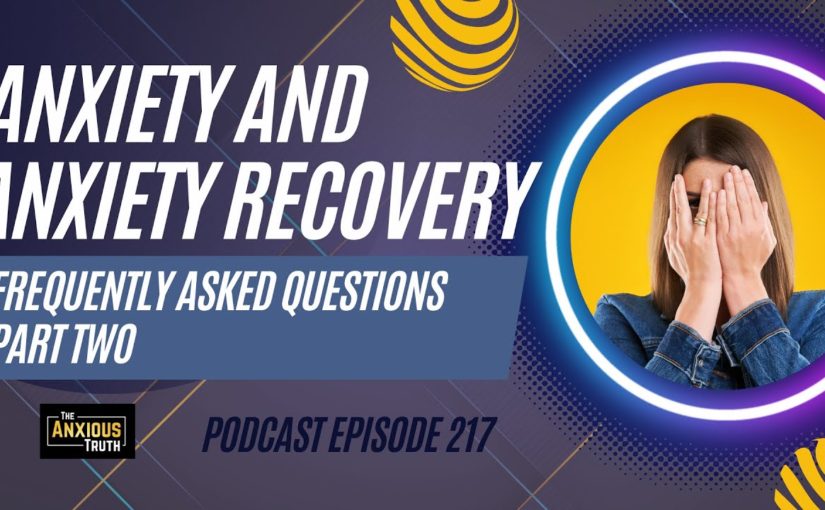
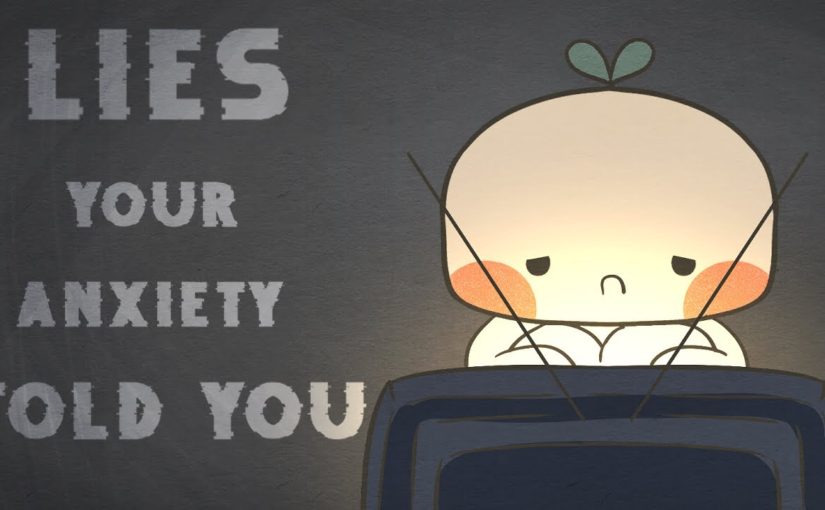
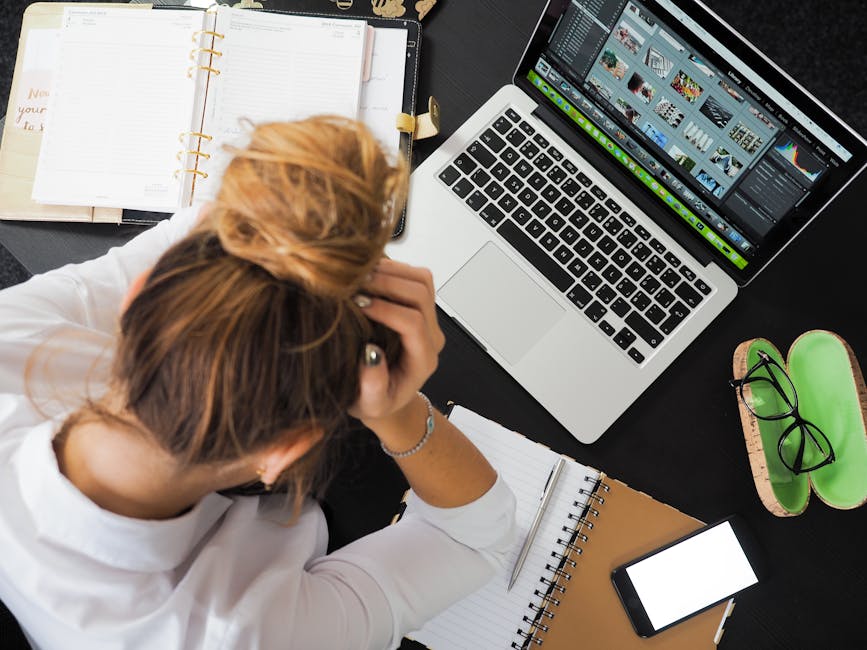
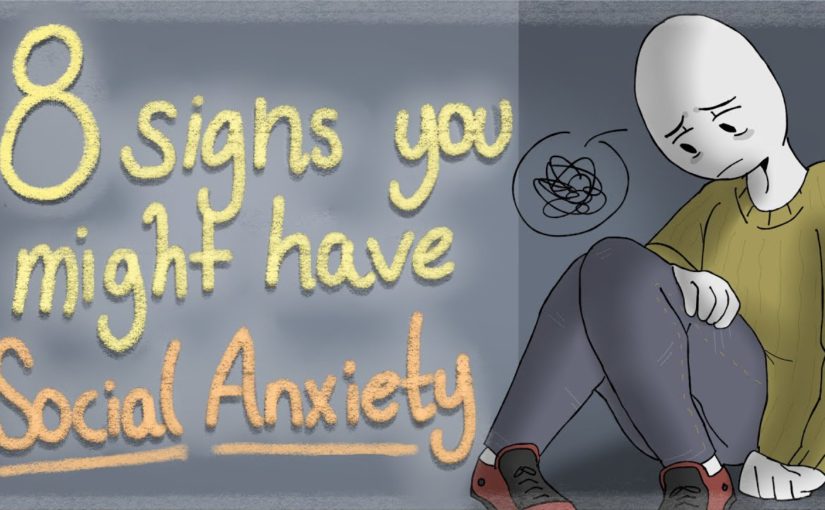

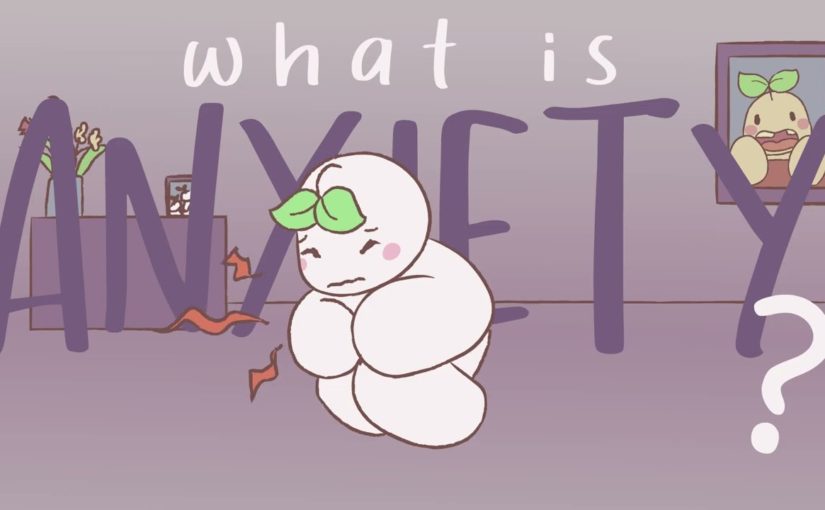

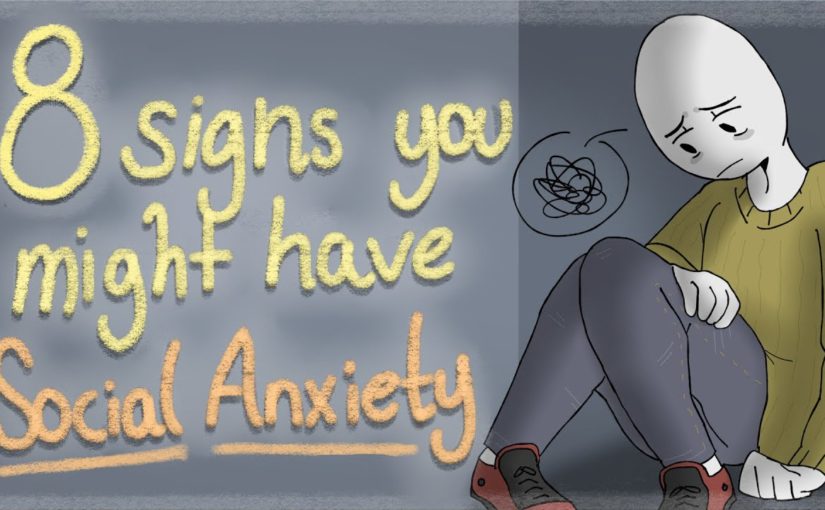


 They might only be able to nod or whisper Four) Panic disorder It becomes a disorder when an individual experiences panic attacks multiple times in their lifetime Panic attacks are intense bursts of fear followed by a range of physical symptoms, these include at least four of the following: Cold sweats, Muscle stiffness or Trembling, Hyperventilation, which is fast, shallow breathing Lightheadedness, Numbness or the Fear of death and/or Insanity The fear afterward of another panic attack. Sometimes actually provokes more panic attacks More often than not, panic attacks are had in combination with other anxiety disorders Therapy along with medications can help in handling panic disorder Five) Agoraphobia Does your local train station seem intimidating? Do you feel faint in a crowded place? Agoraphobia is the fear of public places Anxiety arises because they deem them as too open or dangerous It’s triggered by fears like becoming a victim of crime or of contracting a disease or illness Its sufferers coop themselves up in their homes where they’re comfortable and familiar with their environment Agoraphobe often become over-dependent on other people to compensate for their inability to cope in public Agoraphobia can develop at any age and can be extremely debilitating Exposure therapy works effectively against Agoraphobia in conjunction with medication Six) Specific Phobia These are persistent and extreme fears about a specific object or situation and cause a ton of stress to the sufferer Phobias can be environmental like Acrophobia, the fear of heights and they can be animal-based Or even situational like Taphophobia, the fear of being buried alive Such phobias often arise due to traumatic experiences that cause people to make negative associations with these objects or situations Someone who was clawed in the face by a cat in their childhood might have an avid fear of cats in their adulthood In cases where exposure therapy may not be safe or applicable Cognitive behavioural therapy can be effective in changing a person’s negative association to their feared object or situation Seven) Obsessive-Compulsive Disorder OCD and Post-Traumatic StressDisorder PTSD Yes, OCD and PTSD were categorized by many psychiatrists as disorders to be grouped with the aforementioned anxiety disorders Recently there have been new findings about these disorders that team them both unique enough to be in categories of their own, However, this is not to suggest that OCD and PTSD are any less important to deal with The common thread that group disorders like GAD, S.A.D., panic disorder, and phobias together Is that sufferers of these anxiety disorders experience future-oriented fear? OCD differs, and though there is anxiety felt in the sufferer’s obsession They can find temporary relief in their ritualistic compulsions Unfortunately for OCD sufferers, this means a life of cyclical ritualism that can affect daily living Those suffering from PTSD May suffer anxiety-like symptoms similar to GAD or even panic disorder But PTSD is unique and that its past oriented The sufferer suffers flashbacks that bring them back to the event of their traumatization If you’re diagnosed with anxiety disorder, it’s okay Millions of people around the world understand what it’s like to suffer from an anxiety disorder, so you’re not alone Understand that every single one of these anxiety types is often treatable and manageable Also, if you know someone who may benefit from online counseling we’ve partnered up with Better Help, an affordable online counseling platform that you can utilize They’re constantly striving to improve their services and terms and conditions. The link will be in the description box Did you find this video helpful? If so, remember to share this video with those you think might benefit from it As always, Thanks for watching!
They might only be able to nod or whisper Four) Panic disorder It becomes a disorder when an individual experiences panic attacks multiple times in their lifetime Panic attacks are intense bursts of fear followed by a range of physical symptoms, these include at least four of the following: Cold sweats, Muscle stiffness or Trembling, Hyperventilation, which is fast, shallow breathing Lightheadedness, Numbness or the Fear of death and/or Insanity The fear afterward of another panic attack. Sometimes actually provokes more panic attacks More often than not, panic attacks are had in combination with other anxiety disorders Therapy along with medications can help in handling panic disorder Five) Agoraphobia Does your local train station seem intimidating? Do you feel faint in a crowded place? Agoraphobia is the fear of public places Anxiety arises because they deem them as too open or dangerous It’s triggered by fears like becoming a victim of crime or of contracting a disease or illness Its sufferers coop themselves up in their homes where they’re comfortable and familiar with their environment Agoraphobe often become over-dependent on other people to compensate for their inability to cope in public Agoraphobia can develop at any age and can be extremely debilitating Exposure therapy works effectively against Agoraphobia in conjunction with medication Six) Specific Phobia These are persistent and extreme fears about a specific object or situation and cause a ton of stress to the sufferer Phobias can be environmental like Acrophobia, the fear of heights and they can be animal-based Or even situational like Taphophobia, the fear of being buried alive Such phobias often arise due to traumatic experiences that cause people to make negative associations with these objects or situations Someone who was clawed in the face by a cat in their childhood might have an avid fear of cats in their adulthood In cases where exposure therapy may not be safe or applicable Cognitive behavioural therapy can be effective in changing a person’s negative association to their feared object or situation Seven) Obsessive-Compulsive Disorder OCD and Post-Traumatic StressDisorder PTSD Yes, OCD and PTSD were categorized by many psychiatrists as disorders to be grouped with the aforementioned anxiety disorders Recently there have been new findings about these disorders that team them both unique enough to be in categories of their own, However, this is not to suggest that OCD and PTSD are any less important to deal with The common thread that group disorders like GAD, S.A.D., panic disorder, and phobias together Is that sufferers of these anxiety disorders experience future-oriented fear? OCD differs, and though there is anxiety felt in the sufferer’s obsession They can find temporary relief in their ritualistic compulsions Unfortunately for OCD sufferers, this means a life of cyclical ritualism that can affect daily living Those suffering from PTSD May suffer anxiety-like symptoms similar to GAD or even panic disorder But PTSD is unique and that its past oriented The sufferer suffers flashbacks that bring them back to the event of their traumatization If you’re diagnosed with anxiety disorder, it’s okay Millions of people around the world understand what it’s like to suffer from an anxiety disorder, so you’re not alone Understand that every single one of these anxiety types is often treatable and manageable Also, if you know someone who may benefit from online counseling we’ve partnered up with Better Help, an affordable online counseling platform that you can utilize They’re constantly striving to improve their services and terms and conditions. The link will be in the description box Did you find this video helpful? If so, remember to share this video with those you think might benefit from it As always, Thanks for watching!

